
EMPOWERING THE OCEANIA CLEANING AND HYGIENE INDUSTRY incleanmag.com.au May / June 2024 Reduces Vacuuming Time by 50 Percent Boosts Productivity and Profits Australian Design Patented Technology
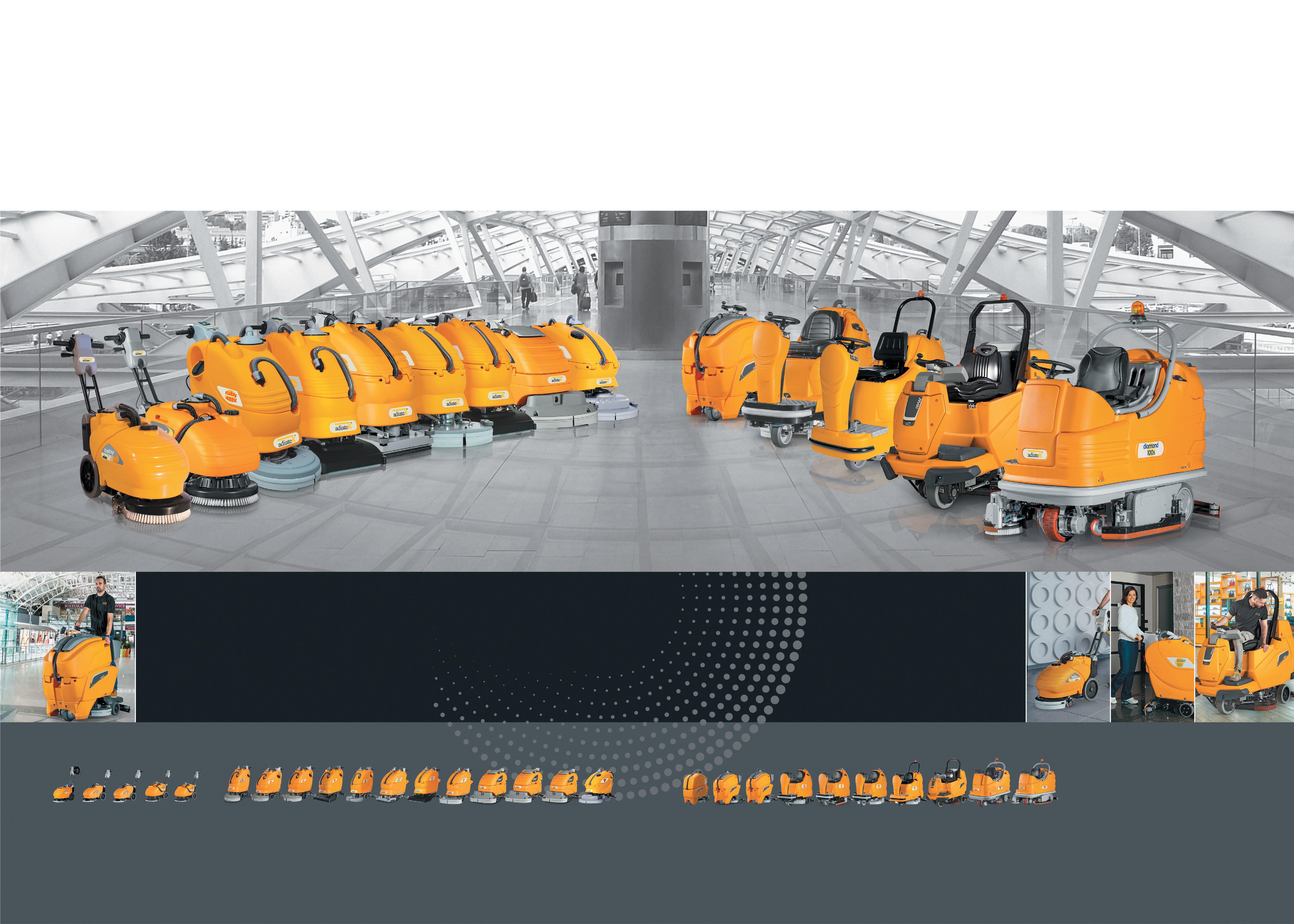

INCLEAN is published by
Niche Media Pty Ltd
on behalf of ISSA – The Worldwide Cleaning Industry Association.
Ground Floor, 15 Paran Place, Glen Iris VIC 3146 Australia
CHAIRMAN
Nicholas Dower
MANAGING DIRECTOR, GROUP PUBLISHER
Paul Lidgerwood
GROUP CONTENT DIRECTOR
Emily Rayner
INTERIM EDITOR
Kiri Sawtell
HEAD OF PARTNERSHIPS AND SALES
Elizabeth Distefano
MEDIA SALES AND PARTNERSHIPS EXECUTIVE
Campbell Morath
PRODUCTION MANAGER
Alvin Wu
PRODUCTION ASSISTANT
Taylar Morgan
EDITORIAL DESIGNER
Norsham Husaini
Print Post Approved Publication No.
PP: 255003/09765
AUSTRALIAN SUBSCRIPTION RATE
12 months (6 issues) - $66 (inc. GST)
To subscribe, email infoincleanmag@issa.com

NINCLEAN is owned by ISSA
ABN: 44 617 407 020
P: +61 2 9890 4951
A: Suite 1, Level 1, 52 O’Connell Street, Parramatta, NSW, 2150 W: www.issa.com
DISCLAIMER: This publication is published by Niche Media PTY LTD. Materials in this publication have been created by a variety of different entities and, to the extent permitted by law, the Publisher accepts no liability for materials created by others. All materials should be considered protected by Australian and international intellectual property laws. Unless you are authorised by law or the copyright owner to do so, you may not copy any of the materials. The mention of a product or service, person or company in this publication does not indicate Publisher endorsement. The views expressed in this publication do not necessarily represent the opinion of the Publisher, its agents, company officers or employees. Any use of the information contained in this publication is at the sole risk of the person using that information. The user should make independent enquiries as to the accuracy of the information before relying on that information. All express or implied terms, conditions, warranties, statements, assurances and representations in relation to the Publisher, its publications and its services are expressly excluded save for those conditions and warranties which must be implied under the laws of any State of Australia or the provisions of Division 2 of Part V of the Trade Practices Act 1974 and any statutory modification or re-enactment thereof. To the extent permitted by law, the Publisher will not be liable for any damages including special, exemplary, punitive or consequential damages (including but not limited to economic loss or loss of profit or revenue or loss of opportunity) or indirect loss or damage of any kind arising in contract, tort or otherwise, even if advised of the possibility of such loss of profits or damages. While we use our best endeavours to ensure accuracy of the materials we create, to the extent permitted by law, the Publisher excludes all liability for loss resulting from any inaccuracies or false or misleading statements that may appear in this publication. Copyright © 2024 - ISSA.
Editor’s letter
iche Media is proud to present you the May/June edition of INCLEAN magazine. This issue marks the first print magazine by the publisher following an exciting new partnership with ISSA, announced in March.
On the new direction for INCLEAN magazine, ISSA director of media and tradeshow sales Micah Ogburn said: “We are excited about the next chapter of the INCLEAN brand and believe there is a great opportunity to better serve the market and our members.”
INCLEAN continues to grow in strength as the trusted news source for information, education, networking and commercial opportunities, and as a leading voice for the cleaning and hygiene industry in Australia, New Zealand and beyond.
In this issue, we explore incoming mandatory climate disclosure laws set for early next year. The days of businesses operating without consideration of their carbon footprint and sustainability impacts are indeed numbered. Find out what small businesses need to know about the changes, and how your business can leverage sustainability as a competitive edge.
Also inside, what can Australia expect this flu season based on winter in the US? Infection prevention experts weigh in on the importance of hand hygiene and cleaning in curbing the spread. Find out why cleaners are crucial in closing the transmission cycle.
Plus, recent floods in Queensland and New South Wales, cyclones in northern Australia and record summer dew points have highlighted the fact that many buildings are not being dried, cleaned or remediated correctly after flood and water damage. Mould remediation and restoration experts discuss the techniques every facility manager should know about.
For many facilities, the future of cleaning heralds an exciting shift as smart machines and autonomous robots line up to dominate the hard-floor cleaning market. Inside, we look at some of the latest local innovations.
I hope you enjoy our first issue of INCLEAN, overseen by our interim editor Kiri Sawtell. I'm grateful for all her hard work and very excited to be taking over from here. Feel free to get in touch via the email below.
Happy reading,
 Myke Bartlett Editor editor@incleanmag.com.au
Myke Bartlett Editor editor@incleanmag.com.au
Niche Media takes its corporate and social responsibilities seriously and is committed to reducing its impact on the environment. We continuously strive to improve our environmental performance and to initiate additional CSR based projects and activities. As part of our company policy we ensure that the products and services used in the manufacture of this magazine are sourced from environmentally responsible suppliers. This magazine has been printed on paper produced from sustainably sourced wood and pulp fibre and is accredited under PEFC chain of custody. PEFC certified wood and paper products come from environmentally appropriate, socially beneficial and economically viable management of forests.

FOR MORE INDUSTRY NEWS FOLLOW US ON CHECK OUT WWW.INCLEANMAG.COM.AU
4 INCLEAN May / June 2024
Scan QR code for more information or visit www.scjp.com





required and is complimented in use with 1L Cutan®
Dispenser.
Only 1 shot is
Handwash
Used across different Facilities! Cutan® Clear Foam Handwash Kills 99% of Dirt and Germs
Perfume-free and dye-free Skin Hypoallergenic* Contains Glycerin (moisturiser) Readily Biodegradable Highly economical Used in a number of facilities *Dermatology tested
SKIN HYPOALLE R CINEG PERFUME-FREE & D Y EEERF ADDED MOISTURIS E SR Find us on LinkedIn ®Cutan is a registered trademark of SC Johnson PTY LTD BioCote antibacterial push button
What’s on
The 2024 RIA Inc. Restoration Conference and Trade Show
5-7 June 2024
The anticipated event returns to Melbourne from 5-7 June, featuring the Building Science Forum, annual gala dinner and awards. restorationindustry.org.au/events/ upcoming-events/

ISSA Cleaning and Hygiene Expo
11-12 September 2024
Australia’s premier trade event for the cleaning and hygiene industry will be held at ICC Sydney. issacleaninghygieneexpo.com

CleanNZ Expo
6-7 November 2024
Clean NZ Expo will take place at the Te Pae Christchurch Convention Centre in Christchurch. cleannzexpo.co.nz

ISSA Show North America
18-21 November 2024
The premier trade show exclusively for the cleaning and facility management industries returns to Las Vegas. issashow.com


Godfreys Group collapses after administrators fail to find buyer
The vacuum cleaner retailer will close its 141 Australia and New Zealand stores by the end of May.
Aged-care wage rise passed by Fair Work Commission
Pay for aged-care support services workers, including cleaners, laundry hands and food services assistants to increase by up to 6.96 percent under the landmark decision.
SMEs face barriers in efforts to take positive climate change action
A survey of the hygiene, personal care and specialty products industry reveals nearly half consider climate change a high priority, but small businesses in the sector are being left behind in both attitudes and policies.
ON THE COVER
Right-to-disconnect laws creating confusion for cleaning industry
The cleaning industry and other sectors are facing legal “grey areas” because of new right-to-disconnect laws discouraging employers from contacting employees outside of work hours.
NSW school cleaners’ privatisation review gets underway
Government agrees to review school cleaning services as contracts of 7000 cleaners who work in NSW public schools, TAFEs and other state office buildings are set to expire at the end of the year.
Killing Germs With UV-C Light
The effective use of germicidal ultraviolet light (UV-C) technology in indoor spaces adds an additional layer of protection to reduce infectious germs.
Cleanstar is a leading Australian wholesale distributor of commercial and domestic vacuum cleaners, vacuum bags, filters, spare parts, accessories and general cleaning equipment. Leveraging a worldwide network of industry partners and large stock holdings, Cleanstar prides itself on offering one of the most comprehensive product ranges in Australia.
IN THE NEWS incleanmag.com.au
6 INCLEAN May / June 2024
IN THIS ISSUE




04 Editor’s Letter 08 Industry News 15 Opinion 50 Products
ISSUE #3 VOLUME 37 MAY / JUNE 2024 Features 10 The New Battlefield Leveraging sustainability as your business’s superpower. 12 Artificial Intelligence for Facility Managers The valuable tool improving building operations. 16 All Hands on Deck Why hand hygiene requires a coordinated effort. 24 Rise of the Machines Autonomous robots to dominate the hard-floor cleaning market. 28 Fighting Back Against Mould Combatting the very real risks to people and buildings. 32 Facility Productivity Strategies Unleashed Solutions to increase productivity and enhance cleaning. 34 Under Pressure Choose wisely when selecting a pressure washer for your facility. 36 Abi El-Kobaili: How I Got Here Using effective communication to remedy obstacles in building management. 46 The Impact of Gratitude in Business The sales strategy, retention tool, sleep aid and ego antidote. 12 16 24 46 Regulars incleanmag.com.au 7

CLIMATE REPORTING: What small businesses need to know
The days of businesses operating without detailed consideration of their carbon footprint and sustainability impacts are expiring.
Words Nicholas Guest
Consistent with many global economies, the Australian Government is taking an active approach to addressing global climate change.
In 2022, the government committed to reducing greenhouse gas emissions across the Australian economy to 43 percent below 2005 levels by 2030. Australia’s whole-of-economy long-term emissions
reduction plan is to achieve net zero emissions by 2050.
This has and will drive significant investment and change throughout our economy and presents significant opportunities for all businesses, no matter their size or industry.
In support of these initiatives, in January, the Australian Treasury released plans for the implementation of mandatory
climate-related reporting disclosures.
The current proposal before parliament would require entities (subject to size) to commence reporting climate-related disclosures from as early as 1 January 2025.
The Australian reporting standards for climate-related disclosures will be aligned with the climate management standards set by the International Sustainability Standards Board (ISSB).
8 INCLEAN May / June 2024 INDUSTRY NEWS
Nicholas Guest is a corporate advisor at HLB Mann Judd.
The ISSB sustainability disclosure standards incorporate some of the established sustainability measurement and reporting guidance in the market, including the Taskforce on Climate-Related Financial Disclosures (TCFD).
Reporting entities will be obliged to delve into:
1. Governance: the processes, controls and procedures employed to oversee sustainability and climaterelated risks and opportunities.
2. Strategy: addressing how these sustainability and climaterelated factors could influence their business model and overall financial performance over short, medium and long-term horizons.
3. Risk management: outlining the processes used to identify, assess and manage sustainability and climate-related risks.
4. Metrics and targets: this means ‘spilling the beans’ on gross greenhouse gas (GHG) emissions (Scopes 1, 2, and 3) in metric tonnes of CO2 equivalent and revealing the company’s GHG intensity using the GHG Protocol.
WHAT THESE ‘SCOPES’ MEAN
Scope 1 – 3 greenhouse gas emissions describe the sources of emissions expressed in kilotonnes of carbon dioxide equivalence.
• Scope 1 emissions are the emissions an entity directly controls and owns, such as those produced by their business-owned vehicles.
• Scope 2 emissions are the indirect emissions linked to purchased or acquired energy, electricity, heating or cooling consumed by the entity.
• Scope 3 emissions are the broadest class and stem from activities not controlled or owned by the entity but are a result of the entity’s value chain, including upstream and downstream emissions.
When an entity reports on Scope 3, it opens a vast array of emissions data from upstream and downstream partners in its value chain. This means supplier or customer activities might find their way into another organisation’s emission calculations.
In response, reporting entities will likely show a preference for suppliers that not only measure their emissions but can also prove they’re cutting down their emission intensity. This will drive changes in customer/supplier relationships.
IMPACT ON SMALL AND MEDIUM-SIZED ENTERPRISES
While the mandatory reporting requirements will initially impact the largest entities in the economy, there will be a rapid flow of impacts to every organisation.
Small and medium-sized enterprises (SMEs) will undergo a major transformation due to mounting pressure from supply chain partners and customers who are directly impacted by stakeholder requirements to capture and measure the greenhouse gas emissions within their enterprise activities.
As the pressure mounts on reporting entities to reduce their carbon footprint, a greater number of SMEs will find themselves on the path to decarbonisation or risk being shut out from valuable customer opportunities.
As such, now is the time for SMEs to consider their impact on supply chain greenhouse emissions and calculate their
carbon footprint – a vital first step on the journey towards decarbonisation.
While emissions measurement and reporting requirements may seem onerous, there are rapidly developing solutions available to assist SMEs.
If not prepared, businesses could potentially run the risk of losing existing clients or being excluded from new client tender opportunities if they cannot provide relevant emission-related information when required.
OPPORTUNITIES AT STAKE
Being aware of the sustainability impacts of your business will add value to the business and potentially provide a competitive advantage.
There are many ways SMEs can harness benefits from investing in ESG and sustainability. Businesses can differentiate their market position if they are progressive in adopting an emission reduction target, which may add value to their proposition within the supply chains of larger businesses.
As companies develop a robust, sustainability reporting ecosystem, they can monitor their progress as they roll out a strong ESG strategy. This should help them to drive value and crucially, make them attractive to customers, suppliers, employees and financial providers.
PERSONAL RISKS FOR DIRECTORS
While it’s important and valuable for entities to establish an emissions-related strategy, directors must be conscious that many aspects of climate-related disclosures are inherently forward-looking.
Being aware of the sustainability impacts of your business will add value to the business and potentially provide a competitive advantage.
- Nicholas Guest
Under the Corporations Act, forward-looking statements made without reasonable grounds may be taken to be misleading.
ASIC has provided guidance that it is actively alert to the risk of ‘greenwashing’ claims made by organisations.
To minimise risk, directors need to actively ensure the content of climaterelated disclosures is based on high-quality information and can be substantiated.
Nicholas Guest is a corporate advisor at HLB Mann Judd. HLB Mann Judd assists business owners and managers in commencing their emissions measurement and reporting journey. More at hlb.com.au. ■
incleanmag.com.au 9 INDUSTRY NEWS

THE NEW Battlefield
Leveraging sustainability as your business’s superpower
Words Brad Horan
10 INCLEAN May / June 2024 OPINION
Photography by Kevin Matos on Unsplash.
The cleaning industry is at a crossroads as sustainability knocks loudly on its door, demanding a greener future. Across the globe, customers are increasingly prioritising eco-friendly and sustainable products and services. It’s a change the cleaning industry, at its core, is perfectly positioned to lead.
Embracing sustainability isn’t just good for the environment, it’s a strategic move businesses can use to outshine their competition. This shift is vital, practical and urgent. Businesses in this sector must adapt to stand out. But how can sustainability be harnessed as a formidable competitive edge?
MEETING CUSTOMER DEMAND
A significant portion of consumers, especially millennials and Gen Zs, now prefer to patronise businesses with proven commitments to sustainability. This is no longer an emerging trend; it’s here, driving purchasing decisions.
Aligning your operations to meet this demand isn’t merely an ethical choice—it’s a commercial one that can set you apart and secure customer loyalty. This shift presents a golden opportunity for cleaning businesses.
By embedding sustainable practices – from the use of biodegradable, non-toxic cleaning agents to reducing water usage and minimising waste – businesses can directly appeal to this growing segment, enhance their brand loyalty, attract new clientele and set themselves apart in a crowded marketplace.
EMPOWERING YOUR FRONTLINE AS SUSTAINABILITY CHAMPIONS
Your staff’s daily insights are invaluable. They know which sustainable practices resonate with customers and which don’t. Regular, action-oriented meetings that turn these insights into strategies can transform your business.
It’s practical: Identify what works, and discard what doesn’t. This approach boosts morale, but also turns your staff into advocates for your brand’s sustainability mission.
FINANCE: BETTING ON GREEN
Investors and banks are favouring businesses that can show a commitment to sustainability. The financial incentives for adopting sustainable practices are more compelling than ever.
This isn’t about future-proofing for its own sake; it’s about accessing better financial terms today. Highlight your sustainable practices in your financial narratives. Clear, direct communication here can open doors to new capital and better rates.
THE PRACTICAL PATH FORWARD
Sustainability isn’t a buzzword. It’s a battleground where, forwardthinking strategies can secure your business’s future success.
The truth is sustainability is not just good for the planet; it’s good for the bottom line.
• Customer feedback: Launch a feedback loop to understand which sustainable practices your customers value most.
• Staff engagement: Use clear, measurable KPIs tied to sustainability goals. Let results drive your strategies. Celebrate wins and learn from misses.
• Financial narratives: Communicate your sustainability wins to investors and banks. Use real data to show how going green is good for your bottom line.
Sustainability isn’t a buzzword. It’s a battleground where practical, forwardthinking strategies can secure your business’s future success.
By recognising the potential of sustainability as a business superpower, you’re not just contributing to a greener planet — you’re building a more resilient, customer-focused and profitable operation.
In the arena of the cleaning industry, the future winners are those who recognise sustainability not just as an operational enhancement but as a competitive advantage.
Brad Horan leverages more than 25 years of experience to transform businesses. His management framework zeroes in on what truly matters – boosting profitability and freeing up leadership time. ■

incleanmag.com.au 11 OPINION
LEVERAGING AI FOR facility management
The valuable tool driving sustainability and improving building operations
Words Adam Povlitz

Sustainable and efficient facility management is vital in today’s fast-changing business industries. Integrating artificial intelligence (AI) within facilities can significantly enhance building efficiency and performance.
As AI gains traction, its applications are expanding across various industries, including environmental sustainability. AI has the potential to drive corporate responsibility through predictive
analytics, automation, energy optimisation, cleaning and inventory management.
Integrating AI tools with existing facility management systems is also beneficial, as it combines all sources into one platform, providing real-time insights while monitoring energy consumption levels.
Its growth can empower organisations with substantial ecological footprints to make significant positive changes.
AI’s data analysis and predictive insights into energy usage can identify
optimisation opportunities and prevent waste. On average, buildings can waste around 25 percent to 30 percent of the water consumed by operations.
With AI-powered computer vision, facilities can detect water leaks or other harmful chemicals and notify authorities.
According to Boston Consulting Group, in 2030, using AI for climate control could help reduce 2.6 to 5.3 gigatons of greenhouse gas (GHG) emissions.
Photography by Andrea Piacquadio on Pexels.
12 INCLEAN May / June 2024 TECHNOLOGY
AI can increase cooling or heating capacities during peak hours to ensure occupants’ comfort. And during off-peak hours, AI can adjust temperature settings based on occupancy to lower energy consumption.
PREDICTIVE SPACE PLANNING
Facility managers often struggle with creating efficient workspaces for employees while avoiding resource waste. AI can significantly improve space planning through predictive analytics. By analysing space occupancy, foot traffic and employee preferences, AI can gain insights into space utilisation patterns. By optimising space utilisation, facility managers can enhance operational efficiency, reduce overhead costs and improve overall employee satisfaction.
DRIVING ENERGY EFFICIENCY
Buildings contribute significantly to global greenhouse gas emissions, accounting for over one-third of worldwide emissions. AI solutions have the potential to reduce carbon emissions and enhance energy efficiency in buildings by monitoring HVAC systems, overall energy use, occupancy and downtime hours.
The data can then be used to predict occupants’ habits and control HVAC energy balance, thereby establishing a consistent temperature for improved efficiency.
Fine-tuning HVAC systems based on this data and weather forecasts can boost sustainability.
Machine learning algorithms within AI can anticipate equipment failures and maintenance needs by analysing patterns in historical data.
This predictive maintenance approach allows facility managers to identify potential issues before they escalate, minimising downtime and extending equipment lifespan. Consequently, proactive maintenance can lead to substantial cost savings, heightened operational efficiency, and improved occupant satisfaction.
AI’S IMPACT ON CLEANERS
Over the past decade, the commercial cleaning industry has grown tremendously. The pandemic has transformed the industry from a mere convenience into a necessity.
The McKinsey Global Institute (MGI) has published reports on the impact of AI on commercial cleaning services. One report discussing the state of AI in 2020, revealed that 52 percent of companies had implemented at least one AI capability.
Commercial cleaning services could harness AI for efficient job scheduling and quality assurance through computer vision.
With the help of occupancy tracking sensors, cleaning can be performed as needed based on actual usage.
MGI estimate that 23 percent of activities in cleaning services could be automated using current technologies.
AI-POWERED INDOOR AIR QUALITY (IAQ) MONITORING
Research by the Harvard T.H. Chan School of Public Health links clean indoor air to increased cognition and productivity. Therefore, maintaining clean air should be a priority for any organisation.
AI-driven solutions offer innovative ways to monitor, analyse and optimise IAQ, improving the wellbeing of building occupants.
Detailed data about air quality also enables better environmental control within any space. This can enhance the marketability of buildings and facilities, particularly in sectors like medicine, science and electronics, where meticulously regulated clean rooms are essential.
AI can leverage data from air quality monitors to assess the impact of air quality in real-time and help inform health protection policies.
In conclusion, AI is a valuable tool that can drive sustainability and improve building operations by reducing usage and enhancing safety, air quality, cleaning and more across all industries.
Adam Povlitz is CEO and president of Anago Cleaning Systems. ■

incleanmag.com.au 13 TECHNOLOGY
Company directors seek clarity on climate reporting
Australian company directors know they must invest in the climate transition, but many are growing increasingly wary to commit to anything publicly amid policy uncertainty.
More than 1000 company directors surveyed for a recent report said they were being pulled in different directions by stakeholders and often did not know whether to speed up or slow down. They expressed what was missing was clarity, the findings from a climate governance study undertaken by the Australian Institute of Company Directors (AICD) showed.
The study, Climate Governance Study 2024: Moving from vision to action, was conducted in collaboration with advisory and investment firm Pollination and surveyed 1057 Australian directors alongside qualitative studies with ASX 200 companies.

It revealed a high level of concern about climate-related risks and the need for a more coordinated approach if Australia is to meet its net-zero emissions targets.
A majority (80 percent) of directors expressed concern about climate-related risks. Of those who were concerned about climate change, 70 percent also saw opportunities to address it.
Most directors (72 percent) said they feel somewhat or well prepared for the
introduction of the federal government’s climate reporting regime, but nearly half (43 percent) of not-for-profits said they were not prepared.
AICD managing director and CEO Mark Rigotti said climate change was no longer just about compliance or reputation.
“While directors acknowledge the need for substantial investment in climate transitions, they are often pulled in different directions by stakeholders,” Mr Rigotti said.
“Directors are increasingly wary of what they commit to publicly, given the legal risks, uncertainty around emerging technologies and the fluid policy environment.”
Forty-two percent of directors said policy uncertainty was a barrier to climate governance, and policy was rated as the main barrier across all sectors.
Pollination managing director Zoe Whitton said: “Alignment among directors, policymakers and investors will be essential to ensure that corporate Australia can realistically pursue net zero in a reasonable timeframe.” ■
 Photography by Austin Kehmeier on Unsplash.
Photography by Austin Kehmeier on Unsplash.
1. Special driveaway price whilst stocks last at participating PEUGEOT Dealers on all new MY23 PEUGEOT Expert Pro Short Auto vehicles sold between 01/04/24 and 31/05/24 and delivered by 31/05/24. Offer excludes fleet, government, and rental buyers. Not available in conjunction with any other offer. PEUGEOT Australia reserves the right to change, supersede or extend these offers at its discretion. Metallic and premium paint not included and are at an additional cost. 2. 5 Year/ 200,000 km Warranty on PEUGEOT commercial vehicles. Subject to terms, conditions, and exclusions. Visit www.peugeot.com.au/owners/warranty.html. 3. 5 Year Roadside Assist on PEUGEOT commercial vehicles. Subject to terms, conditions, and exclusions. Visit www.peugeot.com.au/owners/peugeot-roadside-assistance.html. CONTACT YOUR LOCAL PEUGEOT PROFESSIONAL DEALERSHIP DRIVEAWAY OFFER With 5 Years/200,000 km Warranty2 & 5 Year Roadside Assist3 Offer ends 31st May 2024 or while stocks last. WHILE STOCKS LAST $48,990 DRIVEAWAY1 ON NEW MY23 PEUGEOT EXPERT PRO SWB AUTO VANS 14 INCLEAN May / June 2024 CLIMATE REPORTING

Sustaining the future
It’s time for businesses to choose their climate change path
Words Jennifer Semple
The cleaning and hygiene industry provides products and services that are indispensable for good health and wellbeing. There is no denying that we deliver a ‘social good’. But, in an era defined by pressing environmental challenges, is that still enough?
With the spectre of climate change looming large, coupled with growing concerns on packaging and plastic waste — and policy attention on both from Australian and global authorities — industry players are facing mounting pressure to move beyond business-as-usual and to take meaningful action.
A CALL TO ACTION
Think C. difficile and methicillin-resistant staphylococcus aureus (MRSA) are pressing challenges? The World Health Organisation describes climate change as “the greatest threat to global health in the 21st century”. In response, many businesses in many sectors are increasingly prioritising initiatives aimed at reducing greenhouse gas emissions, conserving resources and promoting renewable energy.
Accord’s recent climate change survey revealed 75 percent of members in the
cleaning, hygiene and specialty products sector consider climate change a risk to their business — with some transitioning to renewable energy and enhancing the resilience of their operations. However, only 50 percent have a climate change strategy and just 17 percent rate climate change action as a high priority.
A lack of internal expertise, time and customer demand appear to be barriers to converting perceived risk to action, according to the same survey.
PACKAGING WASTE: TOWARDS CIRCULAR SOLUTIONS
Decades of linear use-and-dispose packaging models have contributed to pollution, resource depletion and habitat degradation – and also to the climate crisis. To help redress this, federal packaging regulation is just around the corner.
Many companies are already embracing a paradigm shift towards more circular packaging solutions, including refills and container reuse through returns and reconditioning.
The commercial cleaning products sector has a great opportunity with packaging. The highly standardised nature of our packaging and materials, coupled with
relationship-oriented sales approaches, make reuse and recycling very viable options. Are you looking at your packaging footprint? Could you offer a reverselogistics container return system?
IT’S TIME TO ACT
What if you are a smaller company?
What if you aren’t ‘feeling the heat’ on any sustainability issues to date?
It’s coming. Direct regulatory obligations – or their flow-on effects – and customer pressure are only going to increase.
For example, mandatory climate-related reporting in Australia is likely to commence in January next year for the largest entities and then phase in for smaller businesses.
Even if your business is not a reporting entity, you are likely supplying businesses with reporting obligations that will need information from their supply chains. How prepared are you for when these customer inquiries start coming?
AN OPPORTUNITY TO SEIZE
Customers will increasingly be looking at their environmental impact; anticipate their needs and explore how your business could add value.
Positioning your business as a leader in sustainability could attract new business and new talent.
You can save operational costs by optimising your energy use, resource consumption and waste management. You may also be able to attract lower insurance premiums by identifying and mitigating climate-related risks.
Finally, whatever actions you take, communicate with transparency and authenticity to safeguard against greenwashing and build a strong reputation.
You will need quality data for a sound evidence base and a combination of pride and humility. Celebrate your successes and be honest about where there is still progress to be made.
This is a pivotal time for commercial cleaning sector businesses. Status quo or transformation? Business-as-usual or innovation? The decision is yours.
Dr Jennifer Semple is a former research chemist and manager (sustainability and education programs) at Accord Australasia. ■
incleanmag.com.au 15 OPINION
Photography by Bud Helisson on Unsplash.
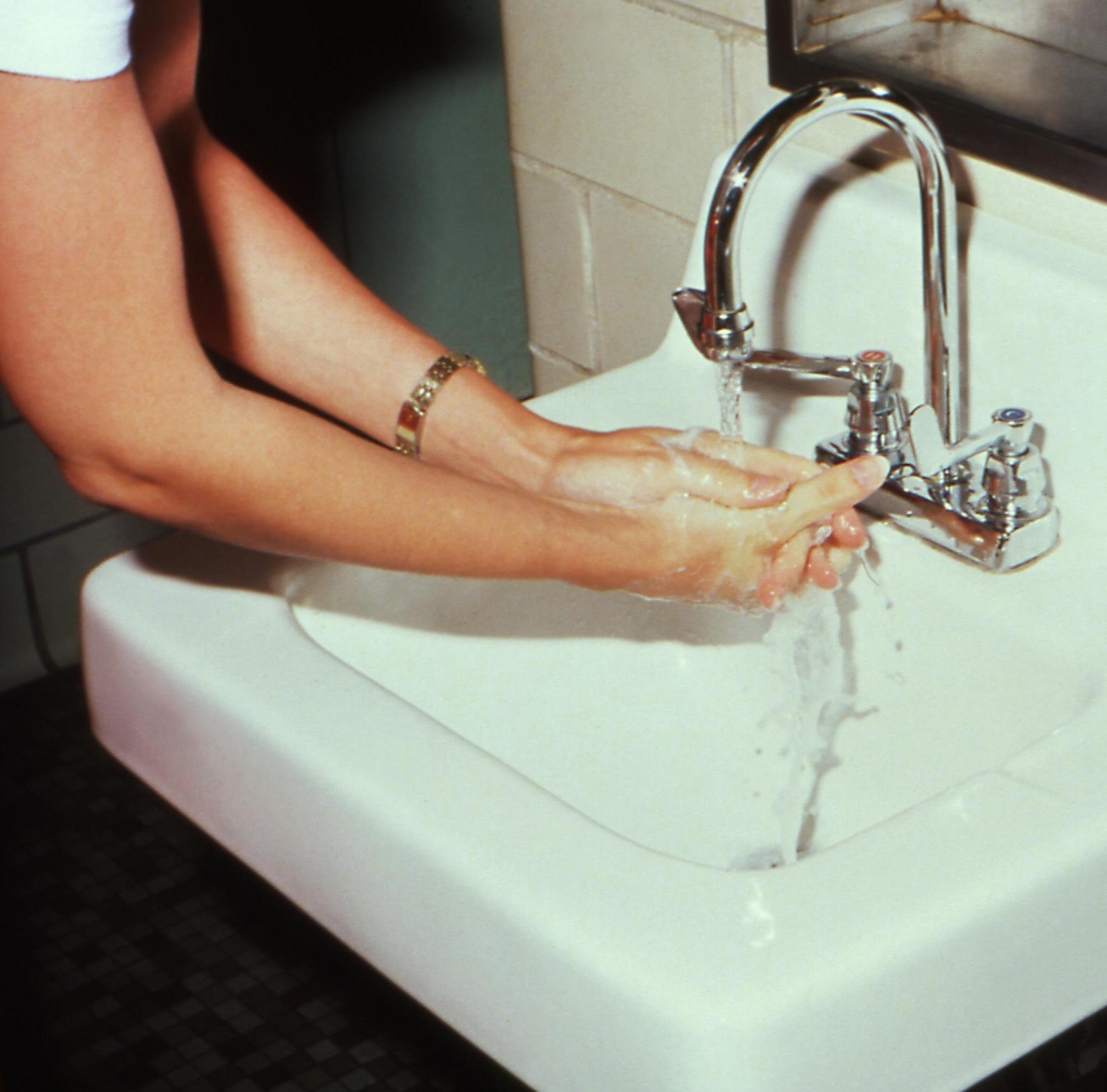
All hands ON DECK
Putting in place systems to encourage better hand hygiene requires a coordinated effort from medical professionals, facility managers, cleaning teams and the public.
Words Cameron Cooper
16 INCLEAN May / June 2024 IN FOCUS
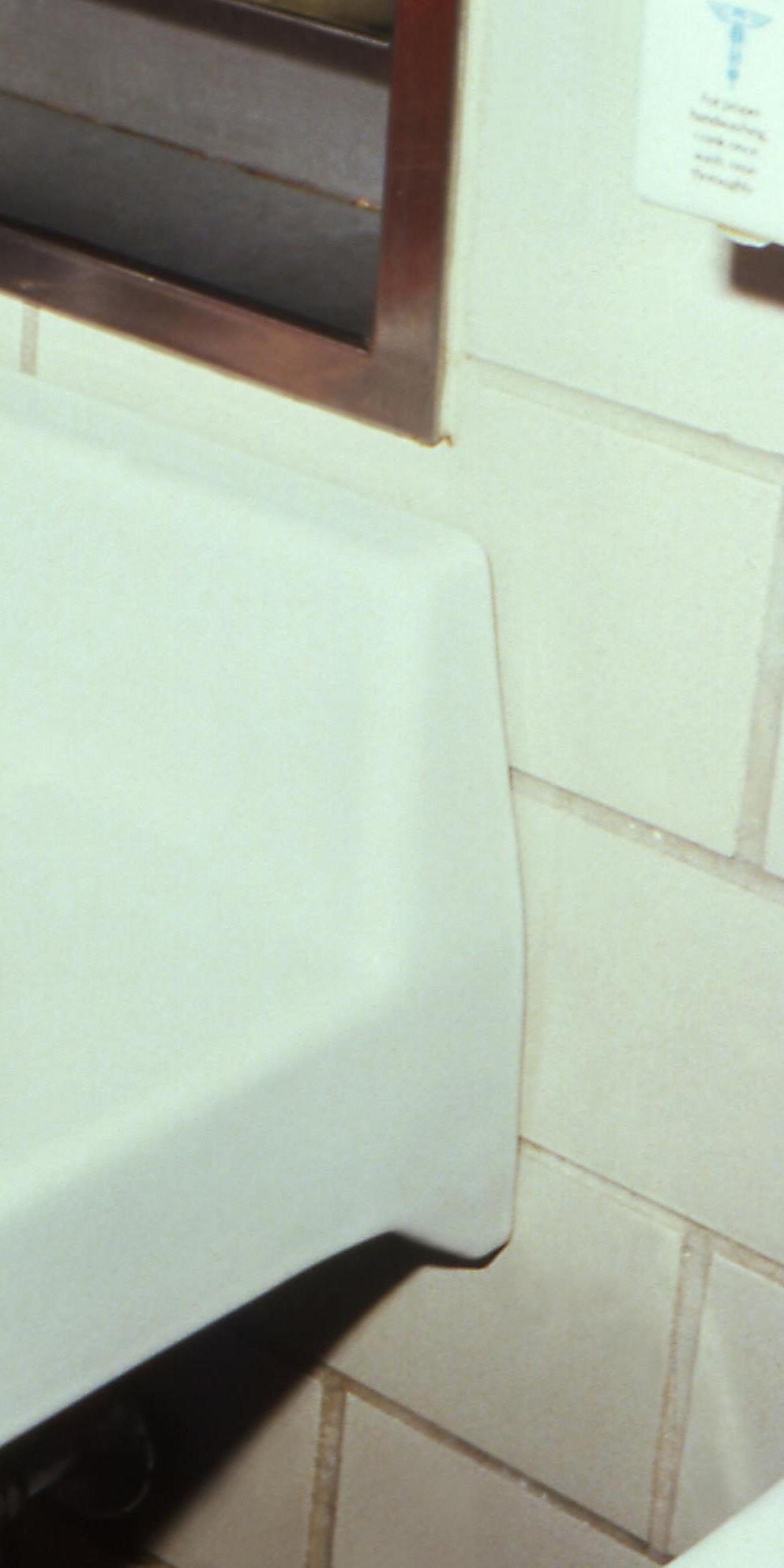
Acommon flaw in cleaning processes often undermines the proven benefits of hand hygiene in combatting potentially deadly infections. Dr Gavin MacgregorSkinner, senior director of the Global Biorisk Advisory Council (GBAC), a division of ISSA, says it is well-accepted that regularly cleaning hands with soap and water, or offering alcohol-based hand sanitisers in facilities, reduces the spread of bacteria and viruses.
However, such efforts can be compromised if facility managers and cleaners do not properly clean and sanitise hightouchpoint areas such as door handles, escalator handrails and light switches. Macgregor-Skinner wants greater focus on this cleaning “loop”.
“Washing your hands and cleaning surfaces leads to better hand hygiene, so making that loop work would significantly decrease the transmission of germs, as well as the transmission of chemicals, contaminants, allergens and anything that’s on a surface,” Macgregor-Skinner says.
COMPLACENCY SETTING IN
Four years since the start of the COVID-19 pandemic, the World Health Organisation (WHO) is still championing the impact of good hand hygiene on health. It believes hand-hygiene practices remain “suboptimal” around the world, with half of all healthcare facilities worldwide lacking the necessities for hand hygiene, such as soap and water, or alcohol-based hand rubs.
Renowned infection-prevention expert Dr Greg Whiteley, executive chair of Whiteley Corporation, agrees that handhygiene complacency is occurring, including within many Australian healthcare facilities.
“It’s like the pandemic never happened, and all the lessons they learned have gone out the window,” Whiteley says. “There are more people catching COVID in Australia now than there were in 2020.”
In addition to cleaners having more robust hand-hygiene practices, Whiteley urges some medical professionals to rethink their hygiene routines and follow WHO guidelines.
With winter approaching, he also calls on people to check their vaccination status, including for COVID-19, influenza virus and measles. There is also a new vaccine available for respiratory syncytial virus, or RSV, which is especially harmful to children. “I’d just encourage everyone to get their vaccines up to date,” Whiteley says.
HELPING THE HYGIENE FIGHT
There are some well-accepted best practices to ensure good hand hygiene, including:
• Washing hands with soap and water for at least 20 seconds (rinse well to remove germs and bacteria).
• Using an alcohol-based hand sanitiser, if soap and water are not available, with at least 60 percent ethyl alcohol or isopropyl alcohol (rub the gel over all parts of your hands and fingers until they are dry).
• Cleaning hands before, during and after activities such as preparing food, caring for people who are sick, or treating wounds.
• Changing or washing gloves that get contaminated (as often as you would wash your hands).
incleanmag.com.au 17 IN FOCUS

For facility managers and cleaning contractors, steps that can make a difference include:
• Ensuring soap dispensers are available and fully stocked.
Cleaners are important in the transmission cycle and, therefore, proper hygiene training is a crucial issue.
- Dr Greg Whiteley
• Placing sanitisers in high-traffic areas such as entrances, exits, check-out counters, bathrooms, cafeterias and any other high-touchpoint locations, rather than hiding them away in low-access zones.
• Putting up signage in bathrooms, food-preparation areas and other high-traffic areas to remind people to wash their hands.
• Placing footprint decals on the floor leading directly to handwashing stations.
Macgregor-Skinner recommends washing hands with soap and water as a first line of defence to break the transmission cycle of touching your eyes, nose and mouth with unwashed hands. Although alcohol-based hand rubs have their place, they do not physically wash away germs and bacteria.
“The germs stay on your hands,” Macgregor-Skinner says. “Alcohol-based hand sanitisers do not kill norovirus, nor do they kill cryptosporidium and there is a cryptosporidium problem in Australia right now.”
Photography by Cottonbro Studio on Pexels.
18 INCLEAN May / June 2024 IN FOCUS
The fab five
For medical practitioners, the World Health Organisation recommends following the “five moments” of hand hygiene. That means cleaning your hands:
1. Before touching a patient (to protect the patient against harmful germs carried on your hands).
2. Before performing any clean/aseptic procedure (to protect the patient against harmful germs, including the patient’s own, from entering his or her body).
3. After an exposure risk to body fluids (to protect yourself and the healthcare environment from harmful patient germs).
4. After touching a patient (to protect yourself and the healthcare environment from harmful patient germs).
5. After touching any object or furniture in the patient’s immediate surroundings (to protect yourself and the healthcare environment from harmful patient germs).
[Source: World Health Organisation]
WINTER WARNING
With the United States having just emerged from a challenging winter during which COVID-19-related deaths remained high and outbreaks of norovirus, RSV and measles caused health concerns, Australia should be on high alert as winter approaches.
Macgregor-Skinner, who is based in Washington DC, says the American winter is a reminder to Australia to refocus on hand hygiene. “Hand hygiene and handwashing with soap and water are critical to protect your health and the health of others. But we just don’t get it right,” Macgregor-Skinner says.
The signs are already pointing to a challenging winter in Australia. Towards the end of March, New South Wales Health advised there had been 10,976 confirmed cases of influenza A and B in New South Wales alone, up from just over 6000 cases at the same time last year. “Now that’s a really early start to our flu season,” Whiteley says.
In such a highly infectious environment, he notes that Whiteley research shows once a person touches biofilms – slimy layers of microorganisms such as bacteria or fungi that grow as a community on surfaces – and gets bugs on their fingers, those bugs will stay on hands for up to 19 subsequent touches.
The findings, cited in a recent research review on dry-surface biofilms by eminent American infectious-diseases experts Dr David Weber and Dr Bill Rutala, underline the importance of proper training of staff on hygiene practices, and communicating hand-hygiene rules and regulations to visitors at healthcare facilities.
“If you work within a healthcare establishment, and you touch something that’s contaminated … now you’re going to touch a whole bunch of things that weren’t contaminated,” Whiteley explains. He adds that it does not matter if those touches are with dry hands or dry gloves.
“The really interesting part of our research was that when you touch a contaminated surface with wet gloves, you get 10 times the number of bugs. So, cleaning staff who have often got wet gloves on are going to pick up 10 times the number of bugs on those wet gloves.
“Cleaners are important in the transmission cycle and, therefore, proper hygiene training is a crucial issue.”
AND SOME GOOD NEWS…
On a positive note, a Food Safety Information Council survey indicates that there has been an increase in the number of young Australians who always wash their hands before handling food. Two-thirds of 18- to 34-year-olds say they always wash their hands before handling food, up from 57 percent in 2022.
A negative, though, is that 17 percent of Australians say they do not always wash their hands after going to the toilet (compared with 18 percent last year). Another 34 percent admit they do not always wash before touching food (compared with 47 percent last year).
This news comes on the back of Food Standards Australia New Zealand and Australian National University research on the annual cost of foodborne disease in Australia. The findings reveal that there are an estimated 4.67 million cases of food poisoning in Australia each year that result in 47,900 hospitalisations and 38 deaths, costing the economy $2.1 billion. Poor handwashing could be a major contributor to these figures.
As 2024 unfolds, Whiteley says the cleaning industry will play a key role in infection control given the importance of rigorous high-touchpoint cleaning in tandem with strong hand hygiene.
“Here’s the really good news for our sector,” he says. “Cleaning is still the number one preventative activity. Whether it’s your hands or a surface, cleaning is the main infection-prevention strategy because it cuts off indirect transmission.” ■



PREDATOR 6V AGM BATTERIES
Double Separator
Heavy Duty, Non-Spillable • High Energy Density & Cycle Life • Low Self Discharge Available at R&J Batteries / rjbatt.com.au / 1300 769 282 incleanmag.com.au 19 IN FOCUS
•
Construction •
Floor care secrets for high-traffic facilities
How to cut costs and protect your investment
Maintaining gleaming floors in busy spaces is a challenge faced by facility managers everywhere. From shopping malls to iconic landmarks that welcome millions of visitors each year, keeping floors pristine despite constant foot traffic is a complex task.
Inefficient floor care practices in these settings can create hidden costs that go beyond the price of cleaning supplies, impacting your bottom line and even the appearance of your facility.
THE TRUE COST OF LABOUR
High-traffic facilities like shopping centres, transport hubs and entertainment venues see a constant stream of visitors, which means floors need frequent attention to stay clean.
Since labour is one of the largest expenses for facility managers, when floors are difficult to maintain, cleaning times increase and so do costs.
The process of removing old floor finishes can be a hassle and not being able to use the floor while it's being stripped and resealed causes major disruptions.
Inefficient products that require an excessive number of coats can take too long to apply or necessitate extensive buffing which also impacts your labour budget. This is where Agar's floor care solutions provide an advantage.
Our products are designed for efficiency with easy-to-use formulas that offer longlasting results, helping your cleaning team cover more ground in less time.
PROTECTING YOUR INVESTMENT
Floors are undeniably one of a facility's most expensive assets. Over time, constant wear and tear can lead to scratches, scuffs and deep-set stains that degrade the floor's appearance.
Worse yet, this damage can become permanent, leading to costly repairs.
A robust floor care system that includes quality sealers and topcoats makes ongoing cleaning significantly easier.
The protective film created by these products prevents dirt and spills from sticking to the surface, simplifying your cleaning routines and further safeguarding your investment.
Agar's sealers are formulated to provide superior protection and longevity, creating a tough barrier against the constant wear and tear that high-traffic floors experience.
We offer specialised sealers tailored to specific floor types, ensuring optimal results whether you're dealing with the natural beauty of stone, the durability of vinyl or the warmth of wood.
SIMPLIFYING YOUR PROCESSES
In high-traffic facilities, efficiency is key to managing costs and maintaining a gleaming appearance.
A compatible product system, from floor strippers to daily maintainers, can streamline your floor care routines.
This translates to several benefits:
• Easier for staff: A cohesive system means less training time as your staff can quickly master a smaller range of compatible products.
• Faster application: Products designed for ease of use save valuable time in busy environments.
• Reduced waste: Concentrated formulas and efficient products minimise waste and stretch your cleaning budget further.
• Optimised cleaning: Combined cleaner and sealer products reduce steps, allowing your team to cover more ground faster.
Agar's Complete Floor Care System offers a solution specifically designed to address the unique challenges of hightraffic floors.
AGAR'S COMPLETE FLOOR CARE SYSTEM
Whether you manage a bustling retail space or a sprawling healthcare facility, Agar offers a comprehensive range of products that address every stage of the floor care process.
Our system includes:
• Powerful strippers: When it's time to remove old, damaged or built-up sealers, our strippers work quickly and effectively to prepare floors for a fresh coat, minimising downtime.
• Protective base sealers: Our base sealers form a solid foundation, extending the life of your floors and creating a base for long-lasting shine.
• Versatile top-coat sealers: Choose from an array of high-performance sealers designed for various floor types, offering a range of gloss levels and features like "no-buff" formulas.
• Efficient floor maintainers: Maintain shine and enhance your floor's protection with our cleaner-sealer combinations and daily cleaners designed for sealed surfaces.
DURABLE FINISHES FOR HIGH-DEMAND AREAS
Our Tuff Gloss sealer offers the exceptional durability needed for hightraffic areas, providing long-lasting protection and an easy-to-maintain, glossy finish that withstands the wear and tear of bustling public spaces. Our sealers also contribute to a safer environment by providing greater traction underfoot.
When used together, Agar’s Complete Floor Care System can streamline your operation, protect your flooring investment and save you money.
Contact Agar today for a free consultation to assess your current floor care routine.
Call 1800 301 302 or visit agar.com.au. ■ 20 INCLEAN May / June 2024 SPONSORED


ENHANCE YOUR FLOORS WITH AGAR.
Get beautiful, enduring results with Agar’s Floor Sealing Systems. Designed to reduce the need for stripping and sealing, this range boosts productivity and cuts costs. With over 55 years of expertise, Agar consistently delivers top-notch formulations to suit all floor types.
1800 301 302 | agar.com.au
* Tuff Gloss was used to seal this floor SCAN TO LEARN MORE

LEARN TODAY, lead tomorrow
The 2024 RIA Restoration Conference and Trade Show returns to Melbourne.
The Restoration Industry Association (RIA) Inc.
Australasia makes its triumphant return to Melbourne this June for the highly anticipated 2024 Restoration Conference and Trade Show.
Immerse yourself in a world of innovation, expertise and ground-breaking solutions as industry leaders converge in the heart of Melbourne to showcase the latest advancements in restoration.
The event presents an unparalleled opportunity to elevate your skills, expand your network, and be at the forefront of industry excellence.
Held at the recently renovated Pullman
on the Park, opposite the MCG (not Pullman Albert Park), the 2024 Restoration Conference and Trade Show offers excellent access to shopping, transport and restaurants on the city fringe.
The two-day pre-event, Building Science Forum, begins on Tuesday 4 June and concludes on Wednesday 5 June 2024.
The conference will commence with a networking and opening evening on Wednesday 5 June, followed by the Trade Show and Conference sessions on Thursday 6 June and Friday 7 June respectively. The event will culminate with the annual gala dinner and lifetime achievement award ceremony.
THE RESTORATION EVENT OF THE YEAR
RIA Inc. invites members of the restoration industry to attend Australasia’s restoration event of the year. Network, promote your business, gain industry insights, and explore the latest products and services — all in one place.
Embracing the theme ‘Learn Today, Lead Tomorrow’, the 2024 conference aims to equip attendees with fresh industry knowledge and influence.
Past attendees have included owners and staff from restoration businesses of all sizes, third-party administrators, insurance builders and professionals, indoor environmental professionals, and more.
22 INCLEAN May / June 2024 EVENTS
Conference speaker topics will cover restoration, business, building science, flooring, insurance, industry advocacy, sustainability and more. The 2024 Restoration Awards will also be presented at the conference.
The Restoration Trade Show is also the biggest gathering of industry vendors in Australasia. It offers a great opportunity to meet with industry vendors and learn about the latest products, services and technology that they have to offer, all in one place. Vendors in attendance include equipment suppliers, product suppliers, technology providers, education providers, laboratories and more.
BUILDING SCIENCE FORUM
The two-day Building Science Forum will be presented by renowned experts, The Moisture Mob. Those working, interested or involved in the restoration, indoor air quality, building and property insurance industries, are invited to attend this exclusive event.
The Moisture Mob is a network of recognised experts who are passionate about disseminating accurate information to the industry on how moisture impacts materials and environments. The group consists of professionals in various fields, including building science, concrete, flooring, roofing, building envelope, moisture detection and material deterioration.
The forum will be facilitated by Pete Consigli, with other notable presenters, including Dr Ralph Moon, Robert (Bob) Higgins, Howard Brickman, John T Hull and Andrew Rynhart.
Collectively, they have published more than 380 industry articles and papers and have held board or committee positions in organisations, including the City of Tampa Historic Preservation Committee,

International Concrete Repair Institute (ICRI), American Society for Testing and Materials (ASTM), World Floor Covering Association (WFCA), Society for Protective Coatings (SPC), Institute of Building Enclosure Consultants (IIBEC) and others.
For the first time, The Moisture Mob will run a live professional forum on building science for industry professionals. The forum agenda includes:
• Don’t fall prey to made-up science, using applied research for better results on your projects
• Best practices for testing moisture in concrete substrates
• An introduction to wood science technologies and evaluating job
site conditions for successful wood flooring installations
• Best practices for commercial roof inspections, use of moisture locating technologies and how to interpret and explain the readings
• An introduction to cloud-based moisture testing technologies and software integration for remote monitoring systems.
The RIA Inc. Restoration Conference and Trade Show is a RIA and IICRC restoration continuing education credit (CEC) approved event.
View the official agenda on the RIA website: restorationindustry.org.au/events/ upcoming-events/ ■
What attendees had to say about previous events:
“The RIA put together an amazing, long-awaited event. The line-up of speakers was vast in their coverage of topics and a joy to listen to. The venue was great and the trade show was a major success. The RIA Conference is a must-attend for anyone in the business.” – S.H
“One of the highlights of the conference was the opportunity to connect with other passionate restoration industry professionals. The networking sessions were wellorganised and allowed for meaningful interactions.” – K.C
“If one is near anything to do with IAQ, restoration or remediation this is a must-attend event.” – D.M
“The location is amazing, the networking is invaluable and the RIA staff are excellent.” – H.T
“A good mash-up of equipment, information and social interaction.” – D.V
incleanmag.com.au 23 EVENTS
Rise of the MACHINES
Smart machines and autonomous robots line up to dominate the hard-floor cleaning market.
Words Cameron Cooper

24 INCLEAN May / June 2024 IN FOCUS
Photography by Sami Salim on Unsplash.
The days of mop-and-bucket cleaning seem to be numbered as a sophisticated range of walk-behind machines and autonomous robots take over hardfloor cleaning. Just ask Duplex Cleaning Machines director Murray McDonald, a veteran of the cleaning industry who has witnessed many changes during his career. He says a combination of better technology and greater education is transforming the market.
“The good old 3000-year-old mop and bucket is a real culprit in contaminating hard floors because you’re recycling dirty water,” McDonald says. “There are better ways to clean a floor.”
At the ISSA Oceania Cleaning and Hygiene Expo 2023, Duplex won the INCLEAN Excellence Award in the small equipment innovation category for its Lithium Hybrid machine. It can clean all types of floors, including timber, carpet, Flotex, profiled ceramics and vinyl.
McDonald says the versatility of such a machine, which can cross floor types and perform restorative work, is crucial for driving quality and cost efficiencies at a time when cleaning margins are tight and staff are difficult to find.
He estimates the Lithium Hybrid can clean a 20-metre corridor “about three times faster than someone could do it manually”.
Duplex is also introducing robotics into its suite of products through the FloorBotics brand, whose fleet can handle multi-area working configurations.
CHANGING OF THE GUARD
In its Australian and New Zealand divisions, Diversey is partnering with Gausium Robotics and TASKI to roll out advanced cleaning robots.
Peter Teska, a global infection-prevention application expert at Diversey, agrees that machines and robots represent the future of hard-floor cleaning.
As the automated floor cleaning technology evolves, more facilities will choose robotic cleaning for areas of their facility where it is appropriate.
- Peter Teska


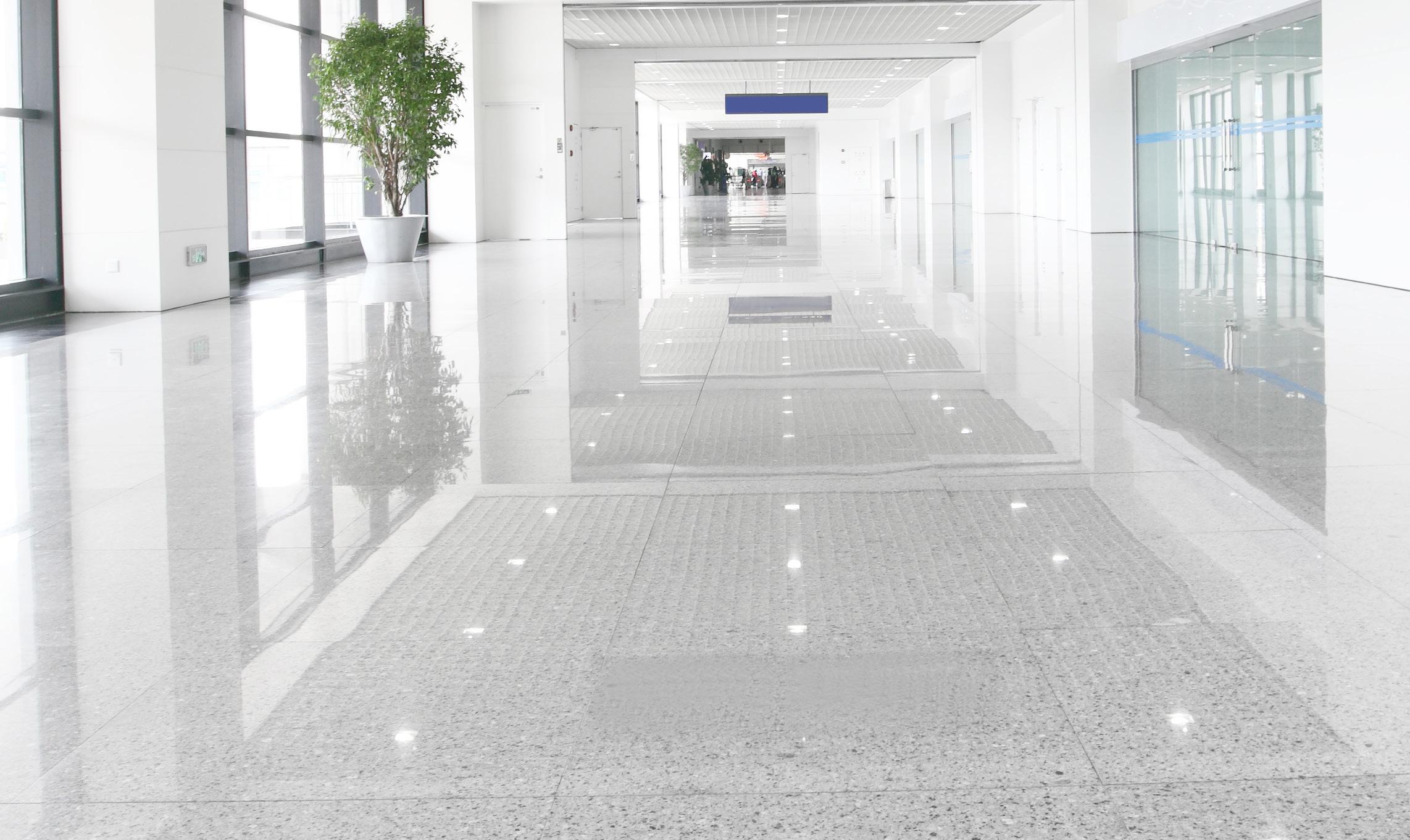

The Italian-made IPC scrubber driers and sweepers are now available exclusively through RapidClean Members across Australia and New Zealand.

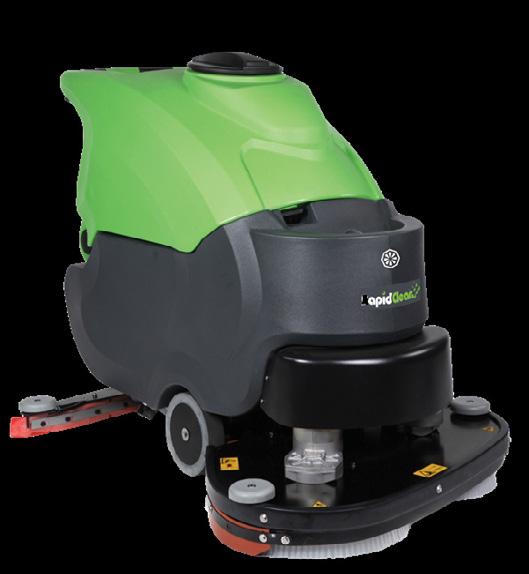




EXCLUSIVE TO
| www.rapidclean.co.nz
www.rapidclean.com.au
Scan for more information
incleanmag.com.au 25 IN FOCUS
“Jobs that can be done more consistently by machines will over time displace human labour,” he says. “As the automated floor cleaning technology evolves, more facilities will choose robotic cleaning for areas of their facility where it is appropriate.”
Nevertheless, Teska says facility managers and cleaning contractors must consider sustainability issues and crunch the numbers when they determine their cleaning options “because using floor machines may have a larger carbon footprint than manual floor cleaning”.
However, products used on floors (with machines) can have better sustainability profiles and the use of the machine may reduce the amount of water and chemicals used,” Teska says.
“So, it is possible that automated floor cleaning will have a smaller carbon footprint over time.”
Technology and machinery aside, Teska believes there will be increasing focus with hard floors on the best way to achieve hygienic results. Diversey’s lab-based studies show that floor cleaning with a neutral cleaner is likely to be less effective than using a biocide, such as a sanitiser or disinfectant.
“These studies showed that machine cleaning of floors is likely to be more effective than manual mopping,” Tesla says. “This leads to a point where facilities, especially in healthcare, need to consider whether using biocides on floors is a better choice than using a neutral cleaner.”
KEEPING IT COMPACT
MotorScrubber Australia managing director Lucas Paris says it is “a given” that tech-driven solutions will increasingly take over from traditional forms of cleaning.
“The barrier to entry is the affordability of the equipment,” he says, noting that robots are out of the league of many smaller cleaning operations or sites. “With MotorScrubber, our niche world is compact, small cleaning equipment. We don’t deal in that robotic space.”
Paris believes financial considerations will, in the short-term at least, give hi-tech walk-behind machines an edge over other options, including expensive robotics. That rationale will see MotorScrubber release the Dryft – which has been described as the world’s fastest floor-cleaning machine for small and mediumsized areas – at Interclean Amsterdam in May.
The Dryft will be able to handle everything from quick spills through to sites such as classrooms, offices, kitchens and bathrooms, with its size giving it an edge over “fairly bulky and weighty” machines that dominate the market for now.
“What we’re focusing on is the ability for cleaners to get into a cupboard as quickly and effectively to get a piece of machinery as they can now with a mop and bucket,” Paris says.
He concedes that facility managers and cleaners will still have to assess the financial viability of compact scrubbers “because the reality with a mop and a bucket is that you can go and get them for $60 or $70 rather than investing a few thousand dollars for a machine that will do a better job”.
“But prices will come down as technology gets ensconced into the world. We all know that,” Paris says.
Floors play a major role in visitor perceptions of facility hygiene, so it is important to have attractive floors.”
- Murray McDonald
BETTER CAREER PATHWAYS
McDonald is excited new hard-floor cleaning technology makes for more interesting and high-value work for cleaners.
“People should not be doing dull, boring, repetitive tasks,” McDonald says. “Getting them to pull out a mop and bucket to clean a floor is not a high-value task. We can get an autonomous machine to do that.”
As facility managers and cleaning companies weigh up their hard-floor hygiene options, Teska advises them to “pick partners that can bring you new technologies and offer a range of solutions so you can match a selected solution with your needs”.
“Floors also play a major role in visitor perceptions of facility hygiene, so it is important to have attractive floors. As you select partners for your facility hygiene, make sure your partners can help with understanding your carbon footprint and how various cleaning processes – for floors or hand-contact surfaces –contribute to the carbon footprint for your facility.”
Most of all, Teska says industry players have to move with the times and embrace change and innovation.
“Continue doing what you are doing today and 10 years from now you will be in the same place you are today. Changing just for the sake of change may not advance your agenda and can even take you backwards. But challenge your partners to provide an evidence-based approach to evolving your facility hygiene so that 10 years from now you are where you need to be.” ■
26 INCLEAN May / June 2024 IN FOCUS

One million ‘Introduction to AI’ scholarships available to small businesses
Artificial intelligence (AI) ‘scholarships’ are now on offer to one million Australians, in a bid to increase the nation’s literacy in the technology, estimated to be worth $4 trillion to the economy by the early 2030s.
Small and medium enterprises (SMEs) are encouraged to sit the free ‘Introduction to Artificial Intelligence’ microskill course provided by the TAFE NSW’s Institute of Applied Technology Digital and the National AI Centre (NAIC) and coordinated by The Commonwealth Scientific and Industrial Research Organisation (CSIRO).
The course will provide a non-technical introduction to AI fundamentals and is designed for people at the beginning of their AI literacy journey.
National AI Centre director Stela Solar says the course is the perfect opportunity for business owners to build their AI understanding.
“SMEs make up over 98 per cent of Australia’s economy, and ‘Introduction to AI’ is their opportunity to learn how they can use this revolutionary technology to enhance their operations, services and market competitiveness,” Solar says.
The microskill is available now through the TAFE NSW Institute of Applied Technology - Digital.
Working in collaboration with TAFE NSW, Microsoft, Macquarie University, and the University of Technology Sydney, the Institute of Applied Technology Digital designs and delivers market-leading training that rapidly adapts to industry needs.
Council of Small Business Organisations Australia (COSBOA) CEO Luke Achterstraat welcomed the introduction of the course, praising its ability to provide small businesses with the knowledge needed to unlock AI’s vast opportunities.
“Small businesses are a main source of innovation in Australia they are entrepreneurs who try new ideas, test new products, and usually back themselves with their own capital,” Achterstraat says.
“This microskill course will help build confidence and competency for small businesses as they navigate the AI landscape.”
Registrations are now open for the course via TAFE NSW website. ■

incleanmag.com.au 27 INDUSTRY NEWS
Photography by Glenn Carstens-Peters on Unsplash.

Fighting back AGAINST MOULD
For the safety of building occupants and cleaning teams, it is crucial for property and facility managers to oversee techniques to combat the very real risks to people and buildings from mould outbreaks.
Words Cameron Cooper
Dripping humidity and an unexpectedly wet summer in parts of Australia have resulted in an all-too-common problem – mould outbreaks.
In one extreme case, the Willyama High School at Broken Hill in New South Wales will have to be demolished and rebuilt because of mould that has infested carpets, chairs and plasterboard.
Scott McFadzen is a director of Coach8, a school offering Institute of Inspection, Cleaning and Restoration Certification (IICRC) training for the cleaning and restoration industry.
McFadzen says the recent floods in Queensland and New South Wales, plus cyclones in northern Australia, have highlighted the fact that many buildings are not being dried, cleaned or remediated correctly after flood and water damage. In turn, this heightens fungal growth and mould threats.
“The fact that there is so much false information and that it is so readily available, leads to poor and uneducated decisions being made,” McFadzen says.
“Unfortunately, facility managers don’t put being trained on water-damage management and correct mould remediation, from appropriate sources, high on their priority list.”
For McFadzen, the best solution is to prevent mould in the first place through the application of sound methods, techniques, standards and practices that are widely recognised in the engineering and construction industries. In practical terms, prudent construction may include:
• thorough planning and assessment of potential risks before starting a building project
• adherence to industry standards and regulations to ensure safety and compliance. The National Construction Code outlines requirements to prevent water and moisture from entering a structure
• quality-control measures to maintain high standards throughout the construction process.
“Proper moisture management is crucial for building durability, occupant health and overall structural integrity,” McFadzen says.
He adds that HVAC systems can play an important role in controlling surface dew-point temperatures within buildings.
28 INCLEAN May / June 2024 IN FOCUS
Photography by Rodion Kutsaiev on Pexels.

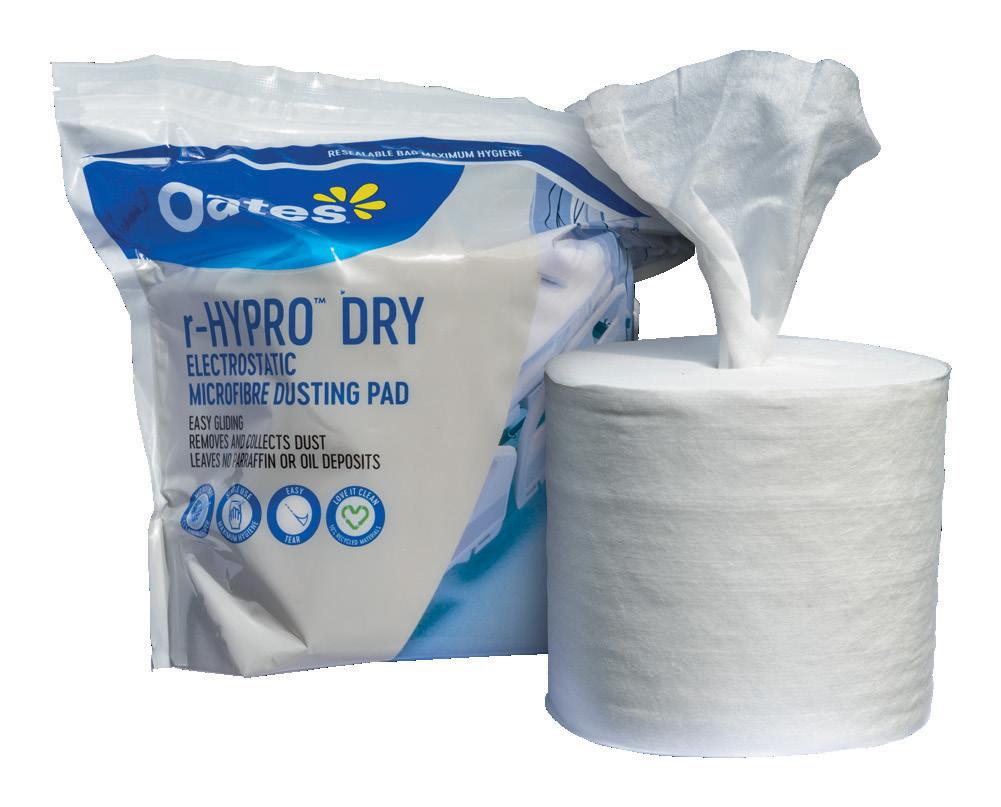
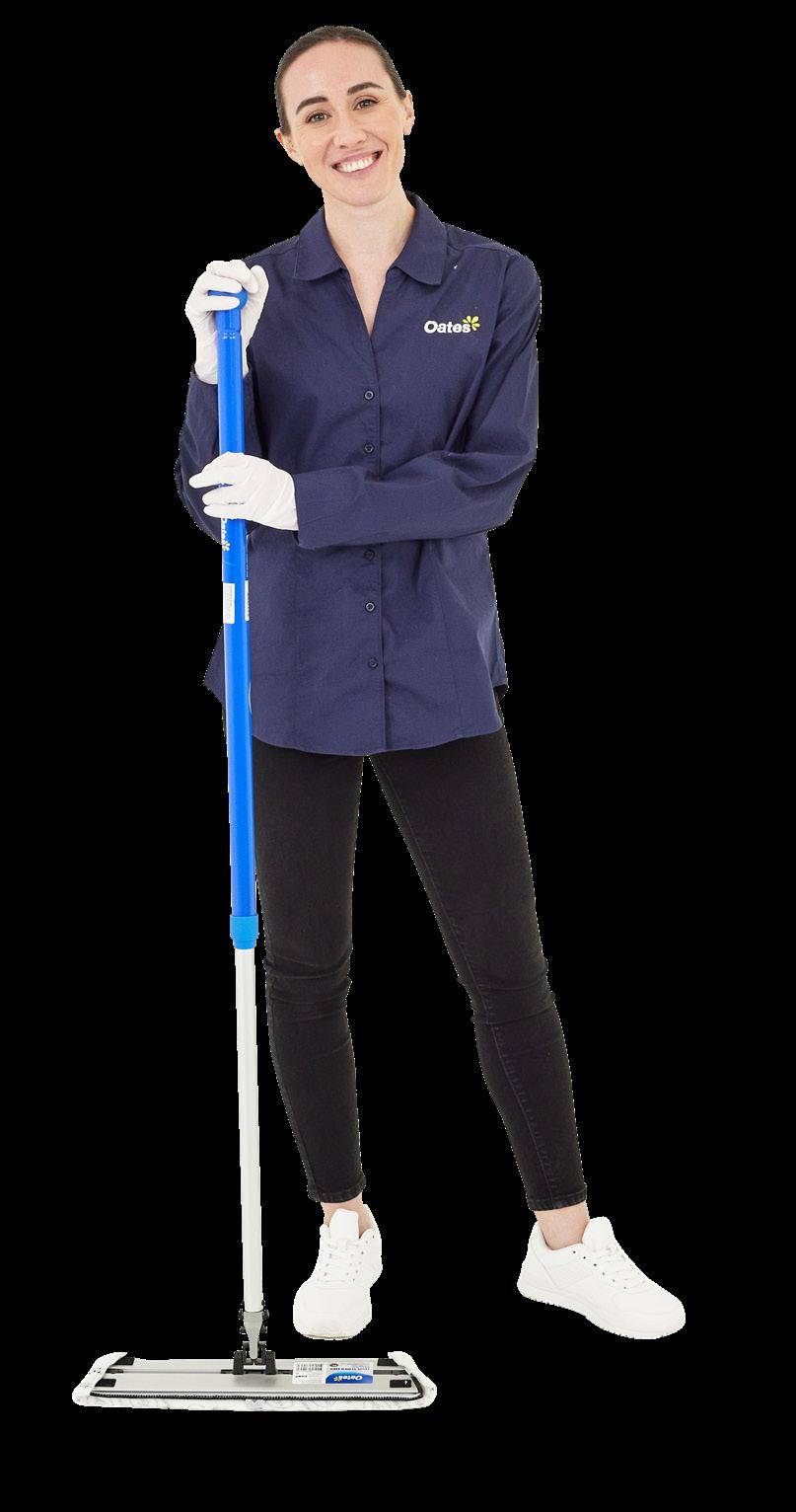 Photography by David Clode on Unsplash.
Photography by David Clode on Unsplash.
RISKS TO PEOPLE AND PROPERTY
Any exposure to mould should be taken seriously. Mould spores can trigger allergic reactions and respiratory issues, while some species of mould can produce mycotoxins that pose severe health risks. They can also wreak havoc on buildings by infesting organic materials such as wood, plasterboard and insulation. According to World Health Organisation guidelines on indoor air quality, it is estimated that dampness and mould affect up to 50 percent of homes in Australia.
John Liddell is the founder of The Mould Doctor, a mouldremediation business that does thousands of mould inspections a month across Victoria and New South Wales.
“Identifying the cause of mould is not complex,” he says. “It’s usually building defects, high levels of humidity caused by condensation, or inadequate ventilation.”
Liddell says modern apartments that are built to achieve a six-star energy rating are often “tightly sealed”, meaning warm air cannot escape and cool air cannot enter the buildings.
“Most of them, unless they’ve got air-exchange systems installed, are like stepping into a sauna,” he says.
All mould, regardless of colour, is irritating to everyone, and allergenic for about one in five people. Any type of mould should be collected from the environment to prevent it from becoming airborne and resulting in inhalation exposure. Focusing only on certain types – that is, black mould – is not prudent or protective.
Liddell says another major problem is that property owners and tenants typically turn to bleach to kill mould.
“But there’s two things to remember – bleach doesn’t kill mould, it feeds the mould, and bleach is a very toxic product that can adversely affect people’s health,” Liddell says.
For mould control, The Mould Doctor offers a combination of thorough inspections to test humidity and moisture levels and identify the cause of any mould; micro-cleaning of a site and the
Better by design
Design advice for homeowners in the aftermath of the 2022 floods in Queensland provides smart ways to avoid mould when building new homes or restoring established properties after such events.
The Flood Resilient Building Guidance for Queensland Homes report offers the following suggestions:
• Use single-skin construction systems with external cladding on a new property because they can be easily cleaned after floods and do not contain cavity spaces where mould can grow.
• Prioritise ventilation when insulation is fixed to timber frames as it allows airflow inside the exterior walls and prevents mould build-up and deterioration of the frame.
• Consider using composite timber for sites because it is durable and resilient to water, mould and termites.
• Consider using steel framing because it is impervious to mould and termites.
[Source: Queensland Reconstruction Authority]
Physically removing mould contamination is the primary means of remediation.”
- Scott McFadzen
physical removal of visible mould; and decontamination fogging to target airborne mould spores, bacteria and chemical volatile organic compounds (VOCs).
Liddell adds that when the humidity level surpasses 55 percent, it creates the perfect environment for mould to grow. Dehumidifiers offer an efficient and cost-effective method for managing moisture in areas up to 60 square metres.
MANAGING MOISTURE
Dr Brad Prezant, managing director of consultancy Prezant Environmental, is well versed in how high ambient humidity and poor indoor moisture management can cause mould problems.
As an occupational health scientist, he advocates better ventilation of buildings, installation of HVAC systems that control the indoor climate and exchange of air, and avoidance of “vulnerable” construction materials such as soft woods that absorb too much water.
He also notes that modern air-conditioning units in homes have complex inverter-based compressors and fans that, in their quest for better energy-efficiency, often re-evaporate a lot of moisture back into rooms.
“So, we’re not dehumidifying rooms as much as we used to,” Dr Prezant says. “We’re using less energy to accomplish comfort, but we’re not managing the moisture in the air as well as before.”
The upshot is that “supplemental dehumidification” is required, with one apparatus to manage cooling and the other to remove moisture.
For mould prevention, Prezant offers three key pieces of advice. First, facility managers should ensure that HVAC systems are monitored and managed properly to avoid moisture build-up. Second, cleaners should ensure that surfaces are free of dust and dirt, which will help stymie mould growth.
30 INCLEAN May / June 2024 IN FOCUS
Third, efforts should focus on particulate matter collection, including using HEPA vacuums to gather dust, pollen, mould, bacteria and other airborne particles.
“You’re not trying to kill anything,” Dr Prezant says. “Of course, that’s the cheaper option. Collecting particulate that’s diffusely spread throughout an environment is a labour-intensive process, but that’s what is necessary.”
McFadzen agrees the priority should be to remove mould, not kill it. He cites techniques taught in the IICRC’s Applied Microbial Remediation Technician certification classes that draw on the ANSI/IICRC S520 Standard for Professional Mould Remediation, which states: “Physically removing mould contamination is the primary means of remediation. Mould contamination should be physically removed from the structure, systems and contents to return them to Condition 1. Attempts to kill, encapsulate or inhibit mould instead of proper source removal generally are not adequate.”
NO ROOM FOR COMPLACENCY
As facility managers weigh up mould risks, McFadzen says training on how to handle uncontrolled moisture ingress should be on the radar for them and their teams.
“Water damage, uncontrolled humidity, temperature differences, ventilation issues, building failures and building occupant behaviour are all factors influencing mould growth in today’s buildings,” he says.
“As these buildings change with newer material trends and our environment shifts with current climate changes, the need for facility management to attend to and understand water damage and the influences of indoor humidity will be required.”
Dr Prezant says mould prevention and efforts to improve air quality will continue to evolve. To date, for example, ventilation has been a go-to means of bringing clean outdoor air into buildings.
However, with air pollution worsening in some countries and exposure to fine particulate matter (PM2.5) being linked to allergies, lung cancer and cardiopulmonary diseases, all solutions must be on the table.
“We might reach a point where state-of-the-art when delivering the best air quality is not so much to bring in 100% outdoor air, but to actually keep the interior air and clean it,” Dr Prezant says.
“So, scrub it for chemicals, clean it for particulate, that sort of thing. It’s possible that we could move in that direction over the long term, but that’s really futuristic stuff right now.” ■



Fill spray bottles, mop buckets and floor scrubbers automatically with a SEKO chemical dispensing system. Isn’t it time you wiped out manual chemical dispensing? SekureMax Safe, secure chemical storage and dispensing Consistent results Reduced chemical consumption Customisable systems Wasted chemical Erratic cleaning performance Staff exposed to concentrated chemicals ProMax Perfect proportioning at the push of a button seko.com incleanmag.com.au 31 IN FOCUS

Facility productivity strategies unleashed
Solutions to increase productivity and enhance cleaning.
Words Jon Hill
Improving facility cleaning and maintenance productivity is more than just an objective. It is essential. Innovative strategies can enhance a facility’s productivity rather than merely cleaning and maintaining it. It can lead to cost savings, occupant satisfaction, and increased operational efficiencies.
Let’s reconsider not only your building’s potential but the abilities of your team. Embracing innovative solutions and processes can transform any cleaning or maintenance crew into a united example of productivity and enhanced cleaning.
THE EVOLVING ROLE OF FACILITY MANAGERS
In recent years, facility management has evolved from a primarily operational role to one encompassing strategic planning, sustainability and technological integration. Facility managers no longer merely maintain physical spaces with mops and buckets; they now play a crucial role in enhancing workplace efficiency, reducing costs and ensuring a healthy environment. To succeed in this changing landscape, facility managers must adapt to new challenges and leverage their experience.
32 INCLEAN May / June 2024 FACILITY MANAGEMENT
This profound transformation is driven, in part, by innovative technology, evolving team dynamics, knowledge database, experienced problem-solving and the goal to deliver high-quality services while optimising budgets.
Embracing change is becoming or will become the norm in the future. Transitioning from once-manual to automated processes will empower efficiency, accuracy and innovation, driving organisational growth in the digital age. A recent Straight Talk segment with Jeff Cross delved into five pivotal topics that every facility manager should master for the future.
TECHNOLOGY DRIVING OPERATIONS
In an era where technology evolves at breakneck speed, facility managers must stay attuned to the latest advancements. Modern facilities increasingly adopt smart solutions, IoT devices and AI-driven analytics to optimise operations.
These innovations enable real-time monitoring, predictive maintenance and enhanced security. Embracing such technology not only improves efficiency but also elevates the customer experience.
Architects have adopted frameworks like building information modelling (BIM), architectural standards, and computerised maintenance management systems (CMMS) to streamline building workflows and enhance decision-making. Understanding these frameworks will assist in designing your workloading efficiently and effectively.
BUILDING A TEAM FOR THE FUTURE
The facility management team of the future demands a blend of traditional and modern skill sets. Effective leadership, communication and adaptability remain paramount. However, facility managers must also cultivate expertise in data analysis, technology implementation and sustainability practices. Of course, culture is the foundation of good team cohesion. Encourage collaboration among team members and foster a learning environment that embraces change. Diverse teams with a mix of skills and perspectives are better equipped to tackle the multifaceted challenges that the future holds.
KNOWLEDGE DATABASE: UTILISE WORKLOADING
Workloading is a pivotal aspect of efficient facility management. By accurately documenting and analysing workloads, facility managers can optimise resource allocation, plan maintenance schedules and ensure that tasks are completed in a timely manner. Embrace digital tools for comprehensive record-keeping and utilise data analytics to gain actionable insights into workload patterns.
Workloading also plays a significant role in justifying budgetary needs and evaluating the efficiency of the facility management team. By leveraging this data, facility managers can make informed decisions, allocate resources effectively and maintain a high standard of customer service.
STRATEGIES TO ADDRESS CONCERNS
Addressing challenges and complaints head-on is an integral part of successful facility management. Efficient help desk management is the cornerstone of exceptional customer support, ensuring timely resolutions and satisfied customers.
To succeed in this changing landscape, facility managers must adapt to new challenges and leverage their experience.
- Jon Hill
Managing and resolving complaints fosters a positive relationship with customers. By better understanding how your customer uses the facility, your company can use predictive analytics to mitigate common facility issues, reducing the frequency of complaints.
Teams that employ a root cause analysis (RCA) methodology to collaboratively dissect issues, identify underlying problems, and develop practical solutions are more effective in dynamic environments. This systematic approach fosters better decisionmaking, enhances problem-solving and prevents recurring issues. Facility managers should implement preventive measures to ensure optimal performance and customer satisfaction.
BUDGETING: DOING MORE WITH LESS
Whether overseeing a facility operation or managing a building service contract, facility managers face the perennial challenge of doing more with less. Tight budgets demand resourcefulness and prioritisation. Start by conducting a thorough budget analysis to identify areas where cost savings are possible without compromising quality.
Implement technology-driven solutions that automate routine or project tasks and reduce labour costs. Negotiate favourable contracts with customers, vendors and suppliers to optimise working capital.
Use customer profitability information to measure which sales segment to pursue based on resource alignment and profitability. Ensure resources are positioned and ready to service your targeted customer base. By managing budgets and seeking innovative cost-saving strategies, facility managers can strike a balance between efficiency and quality.
Facility managers who navigate these challenges and opportunities with vision and adaptability are poised to lead their organisations toward a successful and sustainable future. It will take a collective industry effort to really make the change required.
Jon Hill is the CEO of Cobotiq and presents to business managers how to create and implement profitability information. He is a frequent speaker and presenter on the future impact of automation and technology in the cleaning industry. ■
incleanmag.com.au 33 FACILITY MANAGEMENT

Under pressure
Choose wisely when selecting a pressure washer for your facility
Is the outside of your facility looking a bit dingy from the effects of months of hard weather? Pressure washing to flush out soils quickly and efficiently might be just what your exterior surfaces need. Pressure washing can replace the need to manually scrub surfaces with a brush and detergent.
“Speed is a main advantage of pressure washing,” said Kärcher senior sales trainer Nate Abrahams. “That equates to money because if you’re hiring someone to clean, it could take them a day to complete the job rather than a week.”
Pressure washing your facility’s exterior surfaces will not only benefit its curb appeal, it will also help keep the interior cleaner.
“Most of the soil in your buildings is from walk-in foot traffic,” Abrahams said. “If you can remove dirt, oils and spills on sidewalks, drive-up areas, entryways and other waiting areas, you lower the amount of dirt brought inside.”
Moreover, if a facility is busy, cleaning more often will deliver better results, according to Spitwater New South Wales director Milo Gajin.
“The facility will be cleaner and more presentable which in turn will ensure that it is easier and less expensive to clean and maintain,” Gajin said. “The old notion of a ‘spring clean’ is no longer valid as hygiene standards as well as public expectations demand better results.”
CONSIDER YOUR SPRAY PRESSURE
Abrahams said using the correct nozzle is key to avoiding damage.
“The nozzle creates the pressure at different spray angles – 15
degrees, 25 degrees and 40 degrees,” he said, adding that the 15-degree V-shaped angle delivered the most concentrated spray.
Abrahams recommends spraying 10 to 30 centimetres away from the surface you’re cleaning for optimal results. He added that the sound of the water against the surface will be at its loudest when the user is spraying at the most effective distance.
ELECTRIC VERSUS PETROL VERSUS DIESEL; HOT WATER VERSUS COLD WATER
When purchasing a pressure washer, the first decision you’ll need to make is between an electric, diesel or petrol machine – all of which are available in Australia.
Gajin said the type of high-pressure water cleaner used is generally determined by the application rather than the conditions.
“For example, cleaning of large industrial equipment, mining equipment, truck fleets and on-farm, is generally carried out with electrically powered, single phase or three phase, hot/cold water cleaners with diesel fired burners,” he said.
“Large infrastructure projects use portable, combustion engine powered (diesel or petrol) hot/cold water cleaners with diesel fired burners. These are more powerful and able to be relocated for use.
“Electrically powered cold water pressure cleaners are used in motor vehicle maintenance and small business jobs to be done. They are versatile, inexpensive and offer great results.
“Facilities management, such as public space cleaning, house maintenance, roof cleaning and drain clearing, is almost exclusively done with combustion engine-powered [diesel or petrol]
34 INCLEAN May / June 2024 MAINTENANCE
Photography by Paolo Boaretto on Pexels.
cold water cleaners using a wide range of accessories. Portable, combustion engine powered [diesel or petrol] hot/cold water cleaners with diesel fired burners are also used on bigger cleaning projects.”
City streets and large open spaces are typically cleaned using larger and more powerful units. Gajin said pressure washers commonly used in facilities management were powerful and delivered excellent cleaning results but they can be noisy.
Abrahams said electric models typically cost less, did not need regular tune-ups like other engines would, and are quieter to operate.
“They are good for hotels and other areas where you want less noise,” he said. “They are lightweight and easy to move, and if you have multiple places to plug them in, you are good to go.”
However, he said, the cord can result in portability issues.
He said petrol pressure washers can be higher-performance machines, and can clean much quicker than electric machines. On the downside, petrol and fuel-powered pressure washers require regular maintenance.
“Like our cars, they need tune-ups, spark plug changes and new filters,” Abrahams said.
Pressure washers are also available in hot-water and cold-water models. Abrahams said the hot-water models clean surfaces 40 percent to 60 percent quicker than cold. They are also more efficient in removing oils, grease, and other stains.
“Cold-water machines just push grease around; they don’t really remove it without detergent,” he said.
Cold-water pressure washers, which cost less and require less maintenance than hot-water models, are most effective against dirt, dust, and sand, he said.
CHOOSE YOUR ACCESSORIES
A common mistake Abrahams sees in relation to pressure washers is operators neglecting to use the proper accessory.
“I see people using a wand to wash sidewalks, walking along, swiping the wand back and forth,” he said, explaining that the result is a streaked surface.
Instead, Abrahams recommends using a surface cleaner, which attaches to the pressure washer hose and spins five centimetres above the surface. This accessory evenly sprays water over the surface, ensuring a uniformly clean sidewalk.
Abrahams recommends determining what surfaces you want to clean with a pressure washer, and then determining which attachment will achieve your desired results.
DON’T FORGET ABOUT SAFETY AND LONGEVITY
Gajin advises buying a machine that meets the Australian standards for high pressure water jetting, but is quick to add that standards are not mandatory.
“They are voluntary and as such, difficult to enforce,” he said. The high-pressure water blasting industry covers an extremely wide range of uses and products, Gajin said. A basic, hardwarestore domestic cleaner, operating at six litres per minute water flow and a pressure of 100 Bar (1450 psi) is covered by the same standard as an ultra-high pressure blaster operating at as high as 600 litres per minute and 10,000 Bar (145,000 psi).
He said the Australian industry developed AS/NZS 4233.1 –Use and Maintenance, and AS/NZS 4233.2 – Construction and Performance standards for water blasters to segregate products into different categories depending on their level of performance, to define production and safety standards, applicable PPE, training, user certification and other very important factors.
“The standard is currently going through a major review in order to clarify a number of contentious areas and make it better for all – manufacturers, businesses, contractors, other users and the public,” Gajin said.

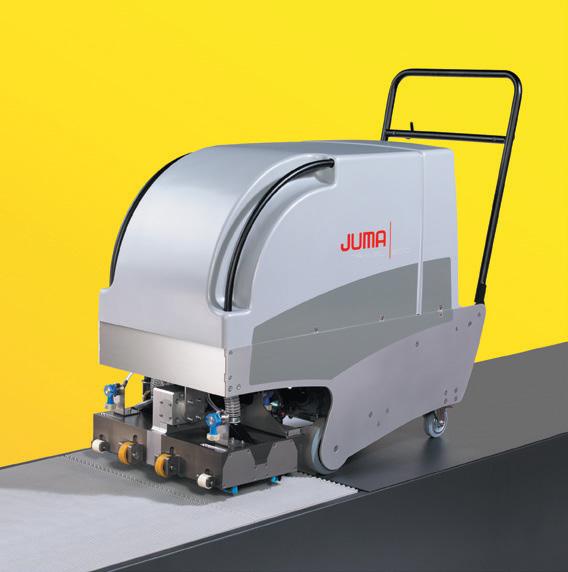
He also noted that both standards also incorporated a number of other standards, such as electrical equipment standards and hose standards, just to name two.
AVOID FALSE ECONOMY
Facility managers should look beyond the price of a pressure washer unit to work out the best solution for the job to be done.
“Cost pressures often push facility managers to the cheapest brands,” Gajin said.
Abrahams also encouraged facility managers to buy a commercial pressure washer that will stand up to the rigours of frequently cleaning a public building.
“Sometimes people will buy a pressure washer at a big box store that is a residential machine, not a commercial machine,” Abrahams said.
He explained that a residential machine can handle about half an hour of use once a month, but using it two hours every week would wear it out quickly.
“These people will end up buying two or three residential cold-water machines a year. Although a commercial unit is more expensive, you will save a lot of money because it can last for 10 years if you take care of it.” ■
incleanmag.com.au 35 MAINTENANCE
Abi El-Kobaili: How I got here
Using effective communication to remedy obstacles in building management
Words Helena Morgan

Before becoming an industrial building manager for Goodman Group, Abi El-Kobaili worked as a teacher in primary education and at a behavioural needs high school. While admitting that education and building management appear dissimilar on paper, El-Kobaili says she draws on many methods developed during teaching years, mainly employing clear, respectful and transparent communication in executing seamless operations.
Since starting at Goodman as a relief building manager, El-Kobaili has ascended through the ranks to oversee the operations and maintenance of 19 buildings. She also is property manager for Oakdale West, a new estate in Kemps Creek, Sydney, set to be completed in June.
El-Kobaili is inspired by the nature of her role as a building manager that necessitates responsibility for a vast array of tasks such as coordinating contractors, engaging with customers and the wider Goodman team, and managing day-to-day maintenance. She sees effective communication as the antidote to most challenges and obstacles within facility management.
Talk us through your career background and education, and what led you to be a building manager for Goodman Group at Oakdale West Industrial estate.
Abi El-Kobaili: I was a teacher for about four years, starting as a casual primary teacher and then progressing into a permanent teaching role at a behavioural high school. I then chose to explore a different career path.
My building management journey started at Meriton where I worked as a residential assistant building manager. I eventually moved into a building manager role and managed six apartment buildings, as well as multiple strata and building management committees (BMC).
I managed a building in Mascot that was part of a large BMC mixed-purpose precinct involving residential, hotel and retail. While managing this site, I was given the opportunity to oversee a newly developed residential building and was involved in organising settlements and engaging with the new homeowners.
The role was diverse as I managed a rental portfolio and engaged with homeowners, tenants and contractors to effectively oversee the management and maintenance of the building.
However, I was ready for my next challenge and wanted to expand my skill set beyond residential property.
I was interested in Goodman Group because of its reputation as a leader in industrial and commercial property.
I started at Goodman as a relief building manager in 2023, and was given the opportunity to manage Oakdale West, a new estate located at Kemps Creek set to be completed in June.
In this role, I am able to draw on the skills I acquired in the residential property sector. I am the direct point of call for customers and oversee the operations and maintenance of newly developed industrial properties.
I manage 19 properties, however some are still under construction. Many of the customers I look after are highprofile companies, including Australia Post, Primary Connect (Woolworths), Telstra, Ebos and Maersk.
What does an average day look like for you?
No two days are the same for me, so there is no average day! I start most mornings listening to a podcast on the way to work.
36 INCLEAN May / June 2024 FACILITY MANAGEMENT
Photography supplied by Goodman Group.
I like TED talks and Diary of a CEO and begin organising daily tasks and developing a checklist of priorities. I usually conduct daily inspections of the properties and check in with customers – there’s a lot of walking around the estate.
Typically, most days involve meetings, phone calls and emails. Some meetings are planned in advance and others happen spontaneously throughout the day. I often coordinate contractors, manage defects, engage with customers and the Goodman team, and ensure that our buildings comply with safety regulations.
What are your responsibilities and who are your stakeholders?
I’m responsible for conducting daily site inspections and managing landscaping presentations and maintenance schedules to ensure they are on track. I also manage contractors to ensure compliance with both legislative and Goodman operational requirements.
Managing the day-to-day operations of buildings requires comprehensive knowledge of services such as HVAC, electrical, fire, hydraulics, lifts, landscaping and pest control. I also deal with a broad range of stakeholders, including our customers and contractors, as well as internal stakeholders.
What other departments do you work with?
I work with a variety of teams including senior management, development, operations, property management and the building team.
It’s great working hand-in-hand with the property and development teams as I see the buildings come together from the ground up. We work together across a range of tasks, from coordinating systems audits to rectifying defects.
Working with operations mostly concerns managing issues around compliance and safety, whereas working with senior management can involve anything from discussing budgets, contributing to strategy developments and receiving guidance and mentorship.
What are some career highlights?
I was honoured to be given the opportunity to manage a new estate at Oakdale West and manage high-profile customers such as Australia Post, Woolworths and Telstra.
It has been a great learning process to be involved in Oakdale’s construction phase and see the initial project vision come to fruition.
What are the main challenges and obstacles within the building management world?
Some common challenges include dealing with unexpected maintenance issues, coordinating multiple contractors and vendors, managing customer expectations, and ensuring operations comply with regulations.
I believe that with effective problem-solving and communication skills, solutions can be developed and obstacles subsequently overcome.
What do you see as the biggest changes to building management in the last five years?
I think the biggest changes in building management have manifested in the areas of diversity, sustainability and technology. Improvements have been made to technology that has enhanced our systems and processes, in addition to producing valuable building data. We now have more refined safety processes.


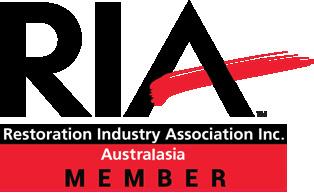
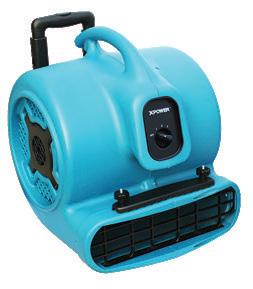




The focus on the environment continues to grow, and sustainable features and green building practices are now a non-negotiable aspect of new buildings.
It has been interesting to learn more about sustainability and witness first-hand the advances in energy efficiency, renewable energy sources, solar panels and electric vehicle (EV) chargers.
Another changing area is diversity. It is fantastic to see that efforts are being made to promote diversity in hiring practices and leadership roles, to ensure a more inclusive and equitable workforce.
Do you find your background in education, particularly working at a behavioural needs high school, relates to building management and collaborating with people from all walks of life?
Even though you wouldn’t think the two careers are alike, there are so many similarities. Teaching and building management involve effectively communicating with people, just in different capacities.
As a teacher, I interacted with students, parents and colleagues to educate and support the learning process, while, as a building manager, I work with customers, contractors, builders and colleagues to ensure the smooth operation and maintenance of our properties.
This story was first published in Facility Management. Visit fmmedia.com.au. ■
® incleanmag.com.au 37 FACILITY MANAGEMENT
Let’s Activ8 2024
Get your
vacuuming
done in half the time
One of the most eagerly anticipated and truly innovative cleaning products to be released into the Australian marketplace this year is the patented Activ8 Battery Powered Vacuum Head.
Activ8 is expected to revolutionise the commercial cleaning industry by significantly reducing vacuuming times by 50 percent, thereby doubling productivity and boosting profits.
Activ8 was developed in Australia by Garth Michalson of Cleanstar and Frank Guglielmo, who designed and tested prototypes for more than eight years.
Designed primarily for use with backpack vacuum cleaners, the revolutionary Activ8 Battery Powered Vacuum Head is specifically engineered for the user to vacuum in a ‘Figure 8’ mopping motion using both hands while standing upright, as opposed to being hunched over, using the backand-forth movement of traditional vacuuming.








The Figure 8 technique allows you to cover a surface area with maximum efficiency, saving time, money, and cutting your vacuuming time in half. This allows you to pick up dirt and dust in just one sweep, avoiding going over the same area multiple times as is the case with the traditional method of vacuuming.
Dual counter-rotating brushes and a centrally located swivel joint allow Activ8 to move freely in any direction with a full 360-degree range of motion. Equipped with a long-life rechargeable battery and up to an impressive two hours of run time, Activ8 can be used safely on both carpets and hard floors making it a true multisurface solution.
Activ8 also doubles as a convenient cordless sweeper with an easy-to-remove dust tray for smaller cleaning jobs where a vacuum cleaner is not required. This convenient feature also allows you to finish cleaning should your battery powered backpack vacuum run out of charge.
The occupational benefits of Activ8’s signature Figure 8 mopping motion protect the health and safety of your cleaning staff by reducing strain, fatigue and injury. Activ8 safeguards you from the risks of bad posture, which is commonly associated with traditional vacuuming techniques where the user is constantly leaning back and forth.
Just as importantly, the benefits that come from cutting your vacuuming time in half allow for significant energy savings given the reduction of electricity consumption.
The Activ8 Battery Powered Vacuum Head can easily be used with most common backpack vacuum cleaners.
Cleanstar’s signature Italian-manufactured Ghibli T1 Backpack – the most powerful backpack on the market – when combined with the Activ8 will offer peak cleaning performance.
The unit comes packaged with a hose cuff that can be screwed onto any regular 32mm vacuum hose, and two long lightweight aluminium rods with pip connectors for enhanced stability.
Activ8’s will be released in mid-2024. Submit an inquiry through the website – activ8clean.com.au or contact Cleanstar on 03 9460 5655 or via email sales@cleanstar.com.au. ■
Cleanstar is the global manufacturer and distributor of the patented Activ8.

Activ8 Battery Powered Vacuum Head at a glance
• World-first new patented technology
• Australian design
• Designed for use with Backpack vacuum cleaners (32mm)
• Lithium-ion technology - up to two hours run time
• Dual counter rotating brush system –replaceable brushes for easy changeover
• Cleans 50% faster than traditional vacuuming
• Boosts productivity and profits and saves energy
• OH&S - improves posture, reduces strain, fatigue and injury
• Doubles as a cordless sweeper with easy to remove dust tray (without a vacuum)
• Engineered to withstand the rigours of commercial cleaning
• Brushless motor
38 INCLEAN May / June 2024 SPONSORED







incleanmag.com.au 39 SPONSORED
Health, hygiene and sustainability: the real value of cleaning

In a world driven by fast-paced changes and facing many new challenges, the Australian cleaning industry has come to play a vital role in public health and hygiene. Recent events, including spotlighted supply chain disruptions and staff shortages, have only emphasised the role of cleaning professionals in maintaining our built environment's continued cleanliness and safety.
The future looks to be one of new norms and heightened health and sustainability awareness. It is incumbent upon the cleaning industry to broaden our focus out from mere cost discussions towards the intrinsic value we bring to society. Cleaning should not be limited to a conversation
about how things look on the surface but should prioritise health outcomes through stringent protocols, training, and state-ofthe-art equipment.
The post-pandemic outlook has brought a sea of change in regulation and consumer-gripped expectations. Corporate accountability, environmental consciousness, and social responsibility are now — or should be — priorities for every business. More and more customers look for businesses that demonstrate the same values and interests and are working towards a better, sustainable future.
This reality means that players in the cleaning business must engage their clients in a meaningful conversation that will allow the ‘value of clean’ to emerge. The cleaning
service provider can become a partner in enhancing better health, a cleaner environment, and improved financial outcomes by listening carefully to the customer, remaining flexible and showing industry know-how.
It’s crucial that the energy around the cleaning industry that we’ve seen develop in the past couple of years is not lost and that the conversation around the industry is not simply pegged on expenditures. Cleaning must be seen as an investment in well-being and efficiency. This would mean that the industry builds on the elevated value of cleaning in enhancing health outcomes, environmental sustainability, and business performance to enable a healthier and more prosperous future. ■
40 INCLEAN May / June 2024 SPONSORED
Photography by Ketut Subiyanto on Pexels.
AUSTRALIA’S ONLY DEDICATED CLEANING AND HYGIENE EVENT
The ISSA Cleaning & Hygiene Expo returns to the heart of Sydney this September at the International Convention Centre (ICC Sydney). EXPLORE industry insights and unparalleled networking opportunities, EXPERIENCE the latest and most innovative products, and ELEVATE your business potential. This is an event not to be missed!
Book Your Exhibition Space Now!
EXPAND YOUR NETWORK
Engage face-to-face with over 2,500 attendees, including decision-makers from world-class organisations representing the entire supply chain.
The time to act is now


BOOST YOUR SALES
Your booth is your business hub. Position your products and solutions directly in front of key buyers and decision-makers.
GLOBAL EXPOSURE
Visitors from over 20 countries, with 40% new to the Expo and eager to connect and make deals.

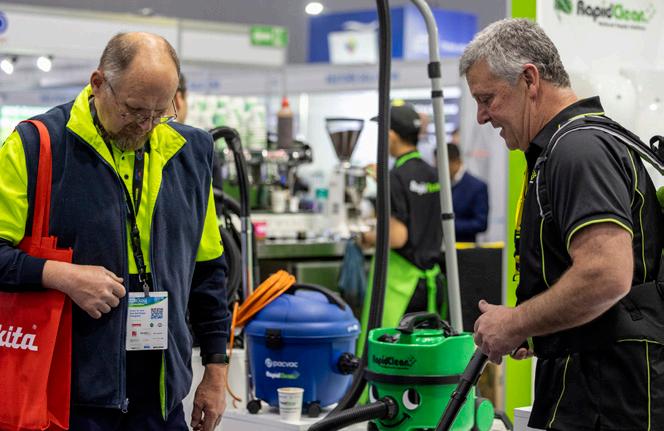


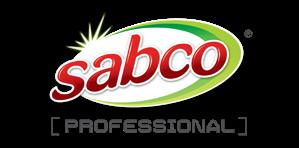
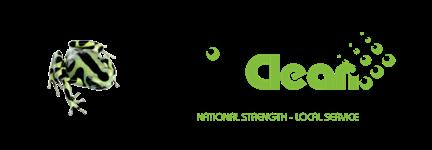

– the best spots are selling fast!
your booth today and ensure your business is front and centre at the Australia’s premier cleaning and hygiene event! BEYOND CLEAN: EXPLORE, EXPERIENCE, ELEVATE Visit issacleaninghygieneexpo.com to register or learn more. KEY BENEFITS Platinum Sponsor Coffee Sponsor Owned by Media Partner Silver Sponsors
Secure

Getting ahead of greenwashing regulation
Changing sustainability from a trend to a reality
With the legislative phase-out of many single-use plastic products across the country and a trend toward more eco-conscious purchasing, Australian businesses are increasingly adopting more sustainable product offerings with environmental features.
However, in the pursuit of better alternatives has come a concerning rise in ‘greenwashing’.
As highlighted by the Australian Competition and Consumer Commission (ACCC), greenwashing involves businesses making vague
or unsubstantiated environmental claims. This poses challenges for consumers seeking genuine sustainable options.
Consumers often rely on sustainabilityrelated product information that is familiar, including labelling and terminology, when making their purchasing decisions.
However, the line between authentic sustainability claims and greenwashing can easily become blurred.
Businesses can inadvertently be making vague or unverifiable environmental claims, setting environmental goals without clear
 Felicity Kelly, Head of Sustainability, Bunzl Australia and New Zealand
Felicity Kelly, Head of Sustainability, Bunzl Australia and New Zealand
42 INCLEAN May / June 2024 SPONSORED
The line between authentic sustainability claims and greenwashing can easily become blurred.
implementation strategies, or using third-party certifications and symbols in a misleading manner.
To address this challenge, both the ACCC and the Australian Securities and Investment Commission (ASIC) issued clear guidance in late 2023 emphasising the importance of accurate, evidence-backed and transparent sustainability claims.
All sustainability-related claims should be accurate, defined statements that can be supported with clear evidence, and products should be true to the label with clarity in communication of any sustainabilityrelated considerations.
While the advice from the ACCC is quite detailed, they offer eight key principles that businesses should adhere to for guidance:
1. Make accurate and truthful claims
2. Have evidence to back up your claims
3. Don’t hide or omit important information
4. Explain any conditions or qualifications on your claims
5. Avoid broad and unqualified claims
6. Use clear and easy-to-understand language
7. Visual elements should not give the wrong impression
8. Be direct and open about your sustainability transition.
As greenwashing can sometimes happen inadvertently or unintentionally, in the wake of stricter guidelines some businesses have now begun to shy away from sharing detailed information about their products or programs; a phenomenon known as ‘green hushing’.
However, despite the temptation for businesses to downplay their sustainability initiatives it is imperative to strike a balance between credibility and transparency.
“By ensuring that environmental product and packaging features are communicated in an honest, authentic way, businesses can ensure that consumers are empowered to make an informed choice that’s right for them and their context,” says Bunzl Australia and New Zealand head of sustainability Felicity Kelly.
When facing challenges like greenwashing and green hushing, it’s essential for businesses to remain vigilant rather than becoming complacent or cynical with their sustainability initiatives.
Instead, businesses should advocate for transparency and carefully assess the messages being communicated.
The journey toward a more sustainable future depends not only on our actions but also on the integrity behind them, emphasising the importance of authenticity in sustainability.
With genuine commitment, we can create a future where sustainability isn’t just a trendy phrase – but a tangible reality. ■

SUSTAIN OZHARVEST CUP COLLECTION THE SOLUTION IS IN YOUR HANDS A Unique Water-Based Coating A water-based lining that would otherwise be made from a traditional oil-based plastic or bio-plastic. Made With Renewable & Compostable Material Compostable in industrial facilities and Forest Stewardship Council® (FSC®-C117930) certified. Help Us Feed Those in Need OzHarvest will supply two meals to feed those in need with every carton of cups purchased. GOLD WINNER www.bunzl.com.au/sustain MKT-2261-InClean-Sustain-OzHarvest-HP-Ad.indd 1 20/03/2024 11:21:53 AM incleanmag.com.au 43 SPONSORED
The big and small thrills of facility management
JLL facility manager Divya Thaper on her role in cultivating vibrant office cultures.
Words Helena Morgan
Divya Thaper has come to expect people to flash a smile and breathe a sigh of relief when she enters a room, and it’s not just because she bursts with an infectious warmth and energy.
A chorus erupts when Thaper – a facility manager at real estate services company JLL – walks in because she is generally attending to a maintenance issue.
“Even though you are ‘behind the scenes’ in facility management, everybody knows you and appreciates you, which is a great feeling,” says Thaper.
“People know when things malfunction, they’ll be seeing my face – they say, oh thank god you’re in office now!”
As with many facilities managers, she is committed to debunking the myth that the job is confined to office administration and maintenance tasks.
“Facility management is so much more than admin – we can be responsible for the overall health of a workplace,” says Thaper.
AN EARLY LOVE FOR CULTURAL EVENT MANAGEMENT
Thaper says her career in facility management was never strategic or calculated. She comes from cultural event management, where she gained an industry start in her home city of New Delhi, India.
Studying French as a second language at university saw Thaper specialise in event management for French artists visiting New Delhi. While she remembers the job as intense and demanding due to donning many different hats, Thaper loved the thrilling nature of event management.
A relocation to Melbourne in 2013 saw Thaper enter an extensive and onerous job-hunting phase wherein she confronted frankly disappointing cases of racial bias that left her feeling disheartened.

“It was a very hard time for me,” she says. “I was told by recruiters to change my name so I could be picked up by a company.”
A GOOD FIT FOR FACILITY MANAGEMENT
Thaper recalls feeling desperate, stagnant and just needing to “do something”, yet coming up against roadblocks.
She eventually secured a job working in office management for a film distribution company specialising in film festivals,
however, the late nights prompted Thaper to find another job, as the hours were not conducive to family life.
A stint working at Deliveroo saw Thaper get ‘facility management scouted’, for lack of a better term.
“Someone told me that I would be a good fit for facilities,” she says.
Unsure what the job entailed, Thaper recalls initially being a guilty culprit of surface-level judgements towards the industry.
Photography supplied by Divya Thaper.
44 INCLEAN May / June 2024 FACILITY MANAGEMENT
“I remember asking if it was office management, and the person said yes, but it extends so much beyond admin,” says Thaper.
She grins while recounting that after living in four countries and five cities –now living in Sydney – she has found a rewarding career in facilities management.
A PURPOSEFUL JOB OF BIG AND SMALL THRILLS
Thaper is grateful to work in an inclusive and meaningful job, with people hailing from many different career backgrounds.
Her small but hearty team of four at JLL have been known to refer to their days as characterised by either thrills or an absence thereof.
A day devoid of the exhilarating generally involves meetings, office walkthroughs, cleaning inspections, financing and invoicing vendors. These days also involve organising events for business units and ensuring clean, sufficiently stocked and well-presented conference or meeting rooms.
Thaper oversees mechanical, electrical and plumbing (MEP) works, so that “peaceful days” lie ahead for the team.
She says a “thrilling day” entails electricity trips or technology malfunctions, and as much as it may cause disruptions to everyday proceedings, Thaper confesses a love for such “thrills”.
THE HEALTH, REAL ESTATE AND AESTHETICS OF A FACILITY
If there is one stereotype Thaper is keen to see the back of, it is that the industry is synonymous with administration. She surmises that this outdated stereotype is symptomatic of facility management as a full-time career still being a relatively new reality, and that language will change.
The condition and state of a facility, whether it be a school, office or convention centre, is indebted to facilities managers –they hold a valued responsibility to make a space safe, comfortable and accessible.
“I feel so proud when someone in my office says they love coming into the office,” says Thaper.
A clean and presentable meeting room, functioning lifts, Thursday night knockoffs, mid-week coffees and sweet treats, seamless safety procedures, brand signage – it’s all owed to Thaper and her team.
“We are the health of the office, the real estate of the office – the looks, the aesthetics, the diversity,” she says.
Her team contributes to office wellbeing, visual presentation and safety, and all behind-the-scenes – often after hours.
ENVIRONMENTALLY AND SOCIALLY RESPONSIBLE FACILITY MANAGEMENT
Thaper rejoices in the major leap in efficiency at JLL through the implementation of Corrigo, a system which manages facility management work orders without needing to send 20 emails.
“We can schedule all maintenance that we want to do with our vendors and they are notified in time,” she says. Deadlines are met and reports are consolidated in one place.
Thaper is inspired by the wider embrace of sustainability and the drive to find ecologically responsible solutions in carbon-heavy buildings.
She is proud to work in an office that also promotes social sustainability, with the JLL space in Barangaroo boasting convenient access to public transport and office-bonding activities which Thaper plays a role in delivering.
“The appreciation from the team keeps us going – people commend us for creating an inclusive space,” she says.
FLEXIBLE AND SOCIALLY VIBRANT OFFICE SPACES
Thaper relishes developing a nourishing office culture, possibly owed to her background in “thrilling” cultural event management.
This task of creating a memorable and unique office culture holds even more value and importance against the backdrop of the heated return-to-office debate.
“Everyone enjoys a good work-life balance,” says Thaper. “The flexibility to manage home priorities such as school drop-offs and pickups, cooking and errands on weekdays is very convenient.”
The pursuit towards securing a healthy and sustainable work-life balance means people are looking to come into the office for more than just a meeting.
Thaper believes workplaces can have the best of both worlds.
“If you can get creative with facility management, it really does make a difference for people.”
This story was first published in Facility Management. Visit fmmedia.com.au. ■

incleanmag.com.au 45 FACILITY MANAGEMENT
The impact of gratitude in business
It can be a sales strategy, retention tool, sleep aid and ego antidote.
Words Chuck Violand
Most of us learn at an early age that it’s polite to thank others for the kindnesses they extend to us. Saying “please” and “thank you” becomes routine. While gratitude is always a good thing, it’s essential that we regularly remind ourselves of the impact that expressing gratitude can have on the people around us.
This is especially true as we become more successful at work or gain influence in our position. It’s far too easy to overlook the people and events that have allowed us to get to where we are today. And our appreciation for the help we’ve gotten from others should be intentional rather than routine.
November of 2004 is when I first addressed the subject of gratefulness and how it works to make us more effective leaders. I wrote about how gratefulness leads to loyalty, which leads to submission, which leads to humility, which finally leads to promotion. In other words, when we realise that the world doesn’t revolve around us, we become the kind of person those around us want to champion.
INDUSTRIAL BUILD IN
In the spirit of intentionally showing appreciation, I’d like to share with you some examples of gratitude.
CTO—CHIEF THANKING OFFICER
At a recent annual meeting of the homeowners’ association for my community, the president mentioned that one of the most important elements of his job is to be the Chief Thanking Officer. He knows that it is only through the efforts of the other board members and the considerable number of volunteer hours from committee members and homeowners that he is able to perform his job properly. I know the president well enough to know that annual meetings are not the only times when he expresses his gratitude to the folks in our community, and it’s always appreciated—so much so that he was rewarded by being reelected for another term.
GRATITUDE AS A SALES STRATEGY
It’s no secret that most small business owners don’t view themselves as the chief salesperson for their company.
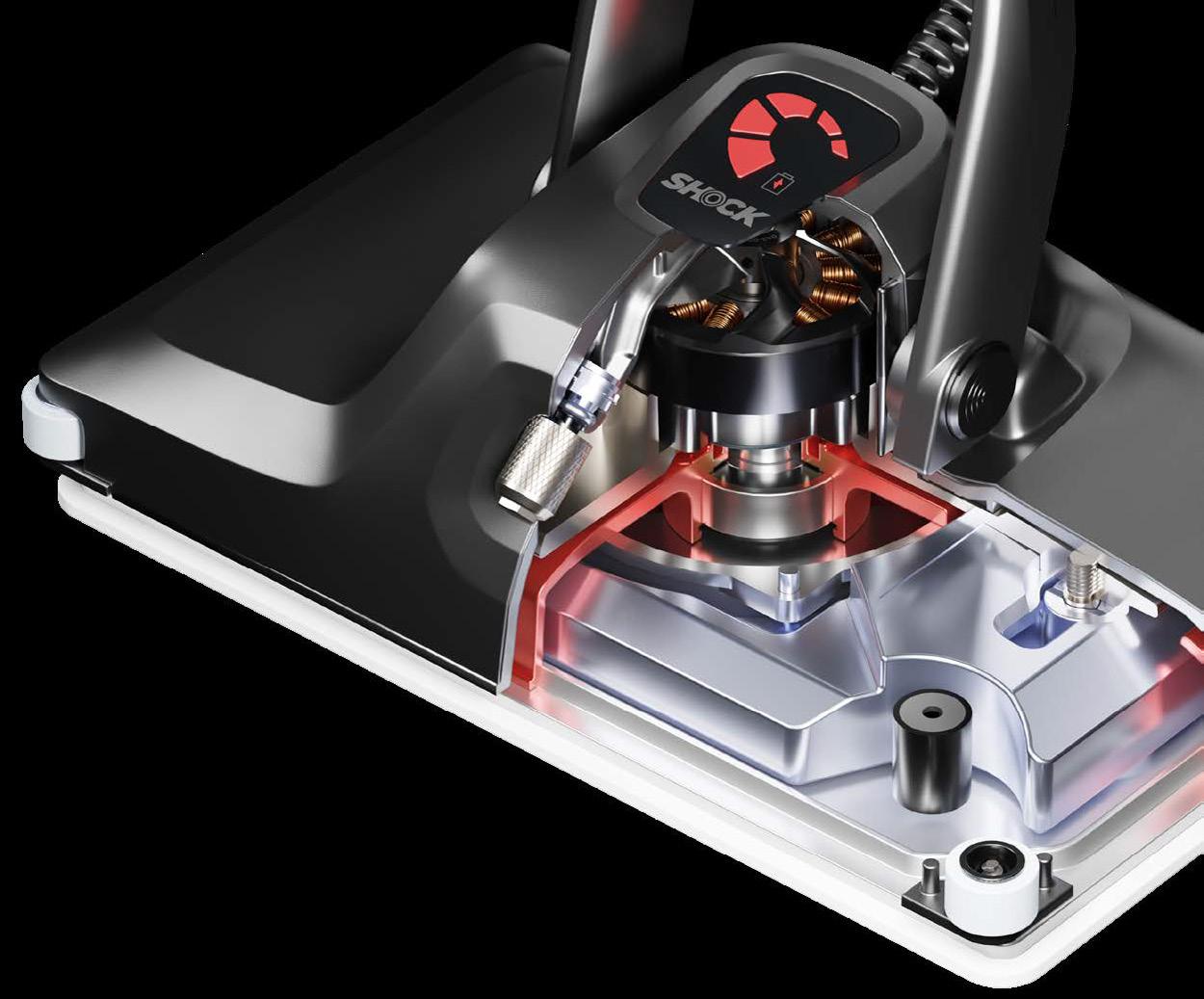
THE DIRT OFF YOUR FLOORS
A
Don't be fooled by SHOCK’s stylish looks – this cleaning machine is an industrial tool comprised of heavy duty and meticulously designed components. Underneath it’s stealthy glass-filled polypropylene casing is a cast alloy motor chassis, an aluminium oscillating drive and a 1.8kg stainless steel weight kit. All corrosion proof, brutally tested and expertly assembled to provide you with the ultimate detail cleaning machine. 46 INCLEAN May / June 2024 MANAGEMENT AND OPERATIONS
COMPACT SIZE

The thought of knocking on doors to promote their products or services causes many to break out in a cold sweat or fall into a litany of excuses as to why right now is a bad time to call on people—even those with whom they’re already doing business.
The next time you’re planning to visit an existing customer, try this: visit them with the intent of expressing how much you appreciate their business. Then ask what you can do to improve the service you’re providing. I think you could build a case that doing this is a differentiator for your company. After all, how many of your competitors visit their customers to thank them for their business?
As your company grows, being smart enough to perform your job well, knowing how to build a better mousetrap than your competitors, or consistently delivering a higher level of service, becomes table stakes in sustaining your company. It’s the relationships you develop with others, both within your company and outside of it, that create long-term success. And one of the cornerstones of building relationships is being intentional in letting people know how much you appreciate them.
In addition to the obvious benefits that expressing gratitude brings not only to the recipient but also to the sender, there are more subtle benefits that can contribute to business success as well. Here are just a few.
GRATITUDE AS A RETENTION TOOL
Perhaps the greatest challenge facing businesses today, especially small businesses, is attracting and keeping a committed workforce.
Millions of dollars and countless hours have been spent conducting interviews with people to see what motivates them and keeps them engaged at work. Near the top of every one of these lists is that people want to feel appreciated.
This doesn’t mean we need to pass out gold stars for showing up to work or pin medals on people for doing a great job. These lose their meaning if we don’t first take care of the basics like saying thank you, paying attention to people, letting them know they matter, or just simply being available to listen.
GRATITUDE AS AN EGO ANTIDOTE
Over the years, I’ve filled quite a few pages writing about the negative impact an over-active ego has on a business.
It’s destructive and avoidable. Just like our individual attitudes, our egos are something only we can control. Showing gratitude to others is a wonderful way for us to do that in our personal and business lives.
The Arbinger Institute is a global training and consulting firm that helps individuals and organisations achieve breakthrough results by shifting from a self-focus to an others-inclusive focus. In their work, they cite Neel Burton, who writes, “By turning us outward, gratitude shifts our focus from what we lack or strive for to what we already have, opening our eyes to the bounty that is life, something to marvel at, revel in, and celebrate rather than forget, ignore, or take for granted as it flies us by.”
GRATITUDE AS A SLEEP AID
The connection between getting a good night’s sleep and maintaining good health is inarguable. Sleep deprivation can weaken our immune system, increase blood pressure, affect our ability to concentrate or think clearly, and the granddaddy of them all—we’re often grumpier.
Neuroscientist and psychologist Tamsin Astor suggests that developing a habit of gratefulness at the end of each day can be a powerful sleep aid. And this doesn’t need to be complicated. A few quiet moments to reflect on the blessings in your life will help to quiet the mind … and the soul.
So, the evidence is in and it’s undeniable. The simple act of showing gratitude to others for the contributions they’ve made to your organisation or to your life is a fundamental step in becoming the kind of person others want to be around.
We can complicate the subject of leadership development by reading all the latest books or watching endless videos on the subject. Or we can simplify it with two simple words: thank you.
Now, if you’ll excuse me, I’m long overdue for intentionally letting some people know how much I appreciate them and the impact they’ve had on my life.
Chuck Violand is the founder of Violand Management Associates (VMA), a highly respected consulting company in the restoration and cleaning industries. Through VMA, he works with business owners and companies to develop their people and profits. For more information, visit violand.com. ■
Photography by Fauxels on Pexels
incleanmag.com.au 47 MANAGEMENT AND OPERATIONS

Polivac Predator MK2
Meticulously designed to deliver powerful performance and provide portability for large- or small-scale carpet cleaning, the Predator packs more punch than units twice its size. The heart of the Predator is a powerful 2000 psi max-rated HYPRO pump, driven by a 0.56kW (0.75 HP) Marathon motor, delivering vibration-free, low-noise extraction power. It features a minimum profile, Euro-style fibreglass body with an aluminium frame, a 50L solution and 42L recovery tank.
Polivac International
Contact Nearest Distributor polivac.com.au
Tempo HD
Tempo HD is a multipurpose neutral detergent designed for use in commercial, institutional and industrial environments. Tempo HD rapidly emulsifies common food oils, mineral oils, and synthetic oils. Being pH-neutral and solvent-free Tempo HD is safe for use on most surfaces. Tempo HD can be used in any area where oil and grease are a problem, including supermarkets, commercial buildings, kitchens, factories, institutional, government and healthcare facilities.
Tempo HD
sales@whiteley.com.au
1800 833 566


Camill Electric Utility Vehicles
Camill Electric Utility Vehicles are environmentally friendly and can help to minimise your carbon footprint. Noise levels are minimal during operation. However, what really sets this fleet apart is the extensiveness of the range, from transport vehicles and sweepers to garbage trucks and pressure washers. Each category also comprises various models to fit different job requirements. Free demonstration and custom branding available.
Central Cleaning Supplies
1300 347 347
sales@centralcleaning.com.au centralcleaning.com.au
RapidClean Green Range

EarthSmart Window and Glass Cleaner
EarthSmart Window and Glass Cleaner is a readily biodegradable, non-hazardous, streak-free cleaner that removes dirt and soil from windows, glass, computer monitors and whiteboards.
` Readily biodegradable
` Non-hazardous and non-toxic (Per the new Globally Harmonised System of Classification and Labelling (GHS))
` Chlorine-free and phosphate-free
` Outstanding finish results
EarthSmart Window and Glass Cleaner
RapidClean offers a comprehensive chemical range of ecologically approved products certified under the Recognised Environmental Credentials Scheme. The RapidGreen chemical range covers commercial and industrial use in kitchens, bathrooms, laundries and public areas, all with a colour-coded alphanumeric identification system and screen-printed bottles to maximise occupational health and safety. The RapidGreen products are packaged in cartons 3 x 5L and 15L pack sizes, to improve the safety of storage and handling.
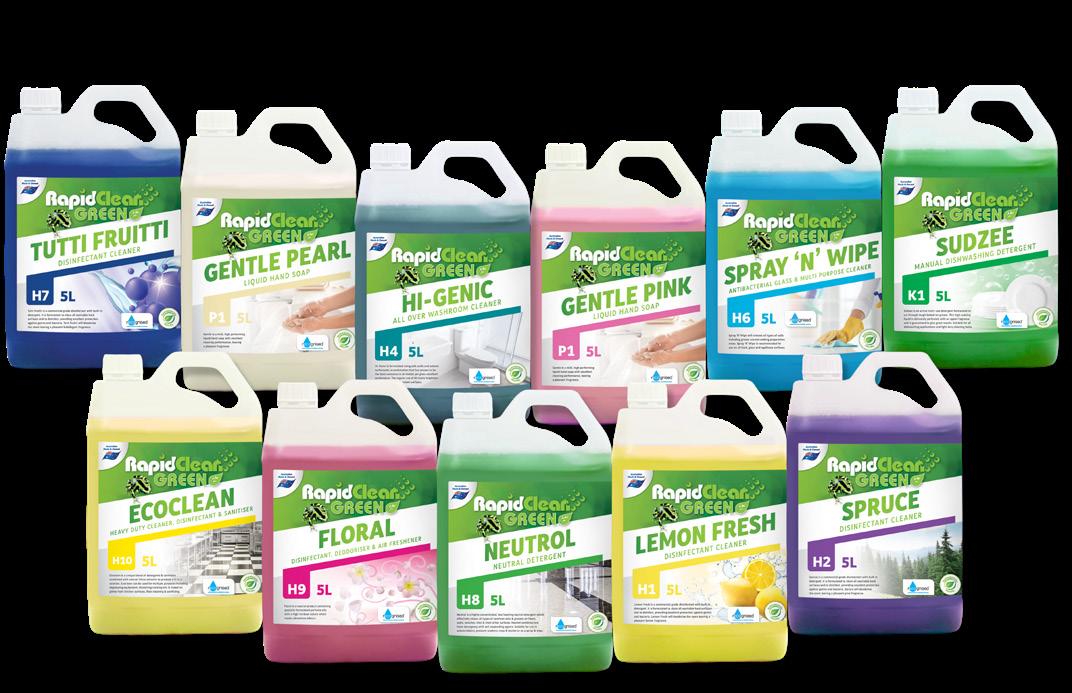
RapidClean 02 4721 1993 rapidclean.com.au
1800 833 566
sales@whiteley.com.au
48 INCLEAN May / June 2024 PRODUCTS
V-Wipes
The unique formula of V-Wipes disinfectant wipes is proven to kill a broad variety of bacteria and viruses, including SARS-CoV-2 (COVID-19). The formulation is pH neutral, and they feature a high-quality apertured fabric perfect for fast, effective cleaning and disinfection of all surfaces within the healthcare environment. The solution in V-Wipes is an Instrument Grade Disinfectant – low-level and can be used on environmental surfaces and non-critical medical devices such as hospital beds and theatre trolleys. V-Wipes
sales@whiteley.com.au
1800 833 566



Willmop 35 Vertical Scrubber-Dryer
The compact vertical scrubber-dryer, Willmop 35, is incredibly fast and makes professional cleaning in small and narrow spaces attainable. Willmop 35 is designed to get the job done quickly. It features 37cm scrubbing paths with 1400m per hour coverage and up to 70 minutes working time. It also has a swappable lithium battery and 360-degree rotatable steering for revolutionary manoeuvrability. Free demonstration available.
Central Cleaning Supplies
1300 347 347
sales@centralcleaning.com.au
centralcleaning.com.au
Bellevue

Bellevue is an eco-preferable, hypoallergenic glass cleaner that rapidly penetrates and removes soil from windows and mirrors without leaving streaks behind. It has a highly effective cleaning power and a GECA-certified formulation making it a safer way to clean for people, property and the planet.
` GECA-certified
` Hypoallergenic and promotes good air quality
` Leaves glass sparkling and clean
` Evaporates quickly and streak-free
` Breaks up dirt fast with minimal wiping needed
` Non-Dangerous Goods, making it safer to use, transport and store
Agar Cleaning Systems
1800 301 302
sales@agar.com.au
agar.com.au
Kuranda
Kuranda is an exceptional multi-purpose disinfectant that has been certified by GECA for its environmentally preferable formula. It offers excellent cleaning and disinfecting qualities so you can be s ure that your surfaces are always spotless and germ-free. Kuranda has a pleasant floral scent and gets rid of dirt and grime quickly. Enjoy the peace of mind that comes with knowing you are providing excellent hygiene for your environment, all while reducing your impact on the planet.
` GECA-certified
` Dual action – cleaner and commercial grade disinfectant
` Leaves surfaces clean, disinfected and perfumed
` Removes the source of bad odours
` Kills germs to reduce the spread of infection
` Breaks down dirt and grime and washes it away
Agar Cleaning Systems
1800 301 302
sales@agar.com.au agar.com.au




incleanmag.com.au 49 PRODUCTS
TUFF GLOSS
Tuff Gloss delivers exceptional performance for commercial floors, creating a high-gloss shine that withstands heavy foot traffic. Its durable formula ensures long-lasting beauty with minimal maintenance and easy recoating, ensuring a flawless look that saves time and effort. Available in 5L and 20L.
` Stunning high-gloss shine
` Fast UHS buffing results
` Simple daily maintenance
` Resists wear in high-traffic areas
` Easy spot repairs and recoating Agar Cleaning Systems 1800 301 302 sales@agar.com.au agar.com.au
Z Water

Z Water is a purified pH12.5 ionised alkaline water made with advance Japanese technology that is chemical-free and requires no rinsing after use. It cleans, deodorises, and sanitises at the same time. Using electrolysis, the Z Water generator produces 20 litres of Z water per hour. Z Water has no colour compounds, no odours, is non-sticky and has no foam up during use. Z Water is the perfect cleaning agent for areas that are sensitive to conventional cleaning chemicals.
Central Cleaning Supplies
1300 347 347
sales@centralcleaning.com.au centralcleaning.com.au


Scrubmaster B5 ORB
The Scrubmaster B5 ORB makes surfaces accessible for machine-assisted cleaning that could previously only be reached with a hand mop. It does so with great mobility, excellent manoeuvrability and little physical effort. Thanks to the innovative Hako-DeltaCleaning-System with orbital drive, the operator can determine the working speed at any time and thus precisely approach narrow areas and corners. The flat cleaning head enables scrubbing close to walls, deep into corners and under furniture and substructures with an under clearance of as little as 120mm.
Hako Australia Pty Ltd 1800 257 221
hksales@hakoaustralia.com.au
hakoaustralia.com.au

RapidClean Floorcare Range
RapidClean’s high-quality range of Australianmade floorcare products give you a broad coverage of floorcare solutions for both carpets and hard floors. Visit the RapidClean website to find out more about the range or head to your local RapidClean member to discuss your solutions for hard floor and carpet care.
RapidClean 02 4721 1993 rapidclean.com.au


Central Cleaning Supplies 1750psi Electric Pressure Washer
Central Cleaning Supplies has released a range of pressure washers to help get your pressure cleaning jobs completed with ease. Suitable for domestic, commercial and industrial use, these pressure washers come with many included accessories so that you are always prepared for the task at hand. The electric model has a maximum pressure of 1750psi, 7.8 L/min flow and 1450 RPM. A lance and 8m hose are included, as well as a set of four nozzles. What’s more, a free turbo nozzle comes as a part of the package. Demonstrations are available.
Central Cleaning Supplies
1300 347 347
sales@centralcleaning.com.au
centralcleaning.com.au
Sabco Professional Ultraclean Microfiber Cloths – 5pk
Sabco Professional’s Ultraclean Microfiber Colour Coded Cloths offer multiple benefits for cleaning. Available in four standard colours, these cloths are suitable for all surfaces and are currently used in leading hospitals and other facilities.
` High absorbent, lint and streak-free cloth
` Usable dry, wet with water or chemicals
` Effective bacterial removal (third party tested with water): P.aeruginosa ATCC 15442 - greater than 99.99 percent; E.coli ATCC 10536 - greater than 99.99 percent; Enterococcus hirae, VRE and TGA-approved COVID-19 surrogate - greater than 99.99 percent
Sabco Professional sabcoprofessional.com.au
50 INCLEAN May / June 2024 PRODUCTS
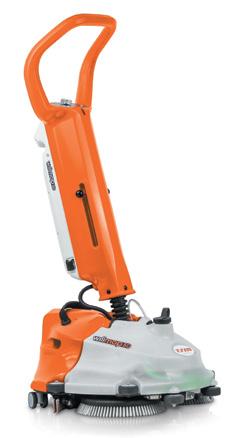
Willmop 50 Vertical Scrubber-Dryer
Willmop 50 is a light and manageable vertical scrubber-dryer, combining the high performance of a professional machine with the flexibility of a traditional mop. Perfect for crowded spaces, it features a 360-degree rotatable steering for revolutionary manoeuvrability. When hands are removed, the machine will remain upright and automatically enter stand-by mode. Willmop 50 is fitted with an interchangeable lithium battery. It features 50cm scrubbing paths with 2100m per hour coverage and 75 minutes of working time. Free demonstration available.
Central Cleaning Supplies
1300 347 347
sales@centralcleaning.com.au centralcleaning.com.au
Central Cleaning Supplies 2320psi Electric Pressure Washer
This new 2320psi electric pressure washer is easy to use and comes with a complete set of accessories. It’s compact yet powerful enough for a huge range of applications. The electric model has a maximum pressure of 2320psi, 11 L/min flow and 2900 RPM. A lance and 8m hose are included, as well as a set of four nozzles. What’s more, a free turbo nozzle comes as a part of the package.
Central Cleaning
1300 347 347
sales@centralcleaning.com.au centralcleaning.com.au
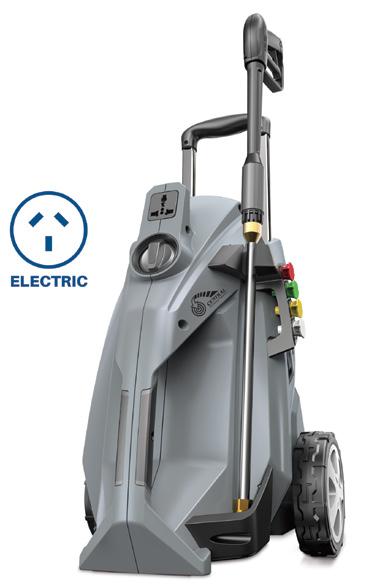
Paper Products for Washroom, Kitchen and Work Spaces
Pristine’s PREMIUM PLUS hand towels maximise absorbency using Through-Air Dried (TAD) technology and a unique dimpled pattern – drying your hands faster and reducing consumption and wastage.

Central Cleaning Supplies 2700psi Petrol Pressure Washer
Suitable for domestic, commercial, and industrial use, Central Cleaning Supplies’ petrol pressure washers come with many included accessories so that you are always prepared for the task at hand. The petrol model has a maximum pressure of 2700psi, 9.3 L/min flow, 7HP and 3400 RPM. A lance and 8m hose are included, as well as a set of four nozzles. A free turbo nozzle comes as part of the package. Demonstrations are available.
Central Cleaning Supplies
1300 347 347
sales@centralcleaning.com.au
centralcleaning.com.au

www.bunzl.com.au/pristine
Made from Renewable Sources HACCP International Certified
MKT-2260-InClean-Pristine-HP-Ad.indd 1 20/03/2024 3:24:02 PM incleanmag.com.au 51 PRODUCTS


































 Myke Bartlett Editor editor@incleanmag.com.au
Myke Bartlett Editor editor@incleanmag.com.au





















 Photography by Austin Kehmeier on Unsplash.
Photography by Austin Kehmeier on Unsplash.



























 Photography by David Clode on Unsplash.
Photography by David Clode on Unsplash.









































 Felicity Kelly, Head of Sustainability, Bunzl Australia and New Zealand
Felicity Kelly, Head of Sustainability, Bunzl Australia and New Zealand




















































